






Steyn City is one of South Africa’s most coveted addresses, a legacy project without rival, a place where the only thing better than today is the thought of tomorrow.
WELCOME HOME TO EXTRAORDINARY














Set in 2,000 acres of indigenous parkland, this award-winning residential development has transformed Johannesburg’s ‘New North’.With exquisite homes for everyone from young executives to families and empty nesters, Steyn City is more than just a home, it’s a meticously designed lifestyle where you can live your best life. Discover luxurious living in beautifully landscaped surrounds with world-class facilities.









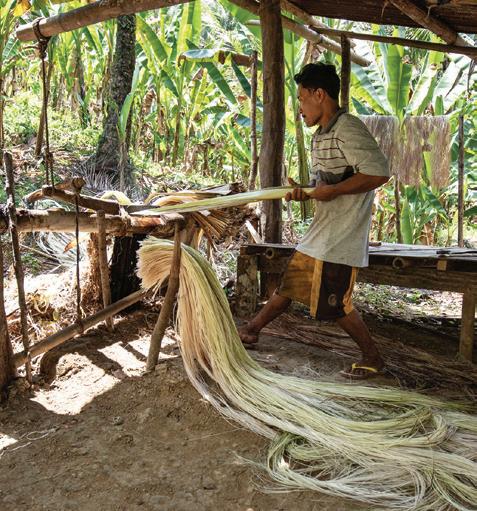
BANANAS FOR ECO-FASHION: Bananatex ® is the pioneering brand behind the world’s fi rst durable, biodegradable, and plastic-free fabric
CONSCIOUS COLLECTIONS: Three South African brands consciously reducing the negative impact of fashion on the planet
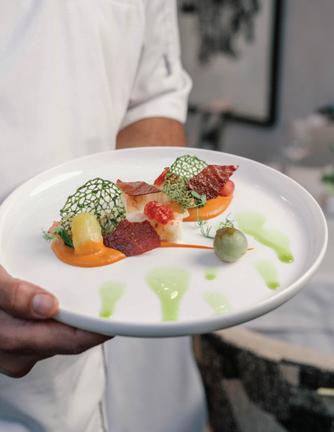
34 DRIVEN TO BE CONSCIOUS: Discover fuel-e cient, eco-conscious driving with the Lexus RX 450H+
42 CHARGING AHEAD: Anticipating the Lexus driver’s ever-changing needs
44
PRECISION DINING:
Akido Restaurant’s chef, Earl Akido, shares his intricate culinary journey






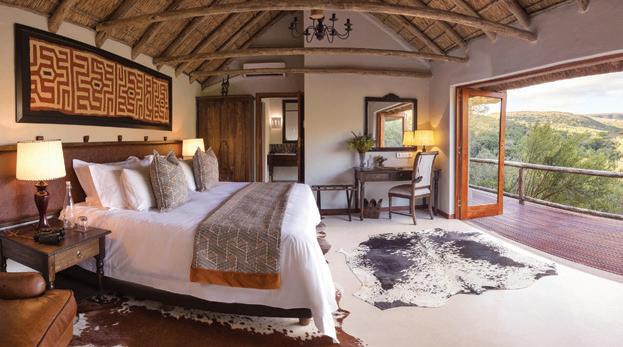


















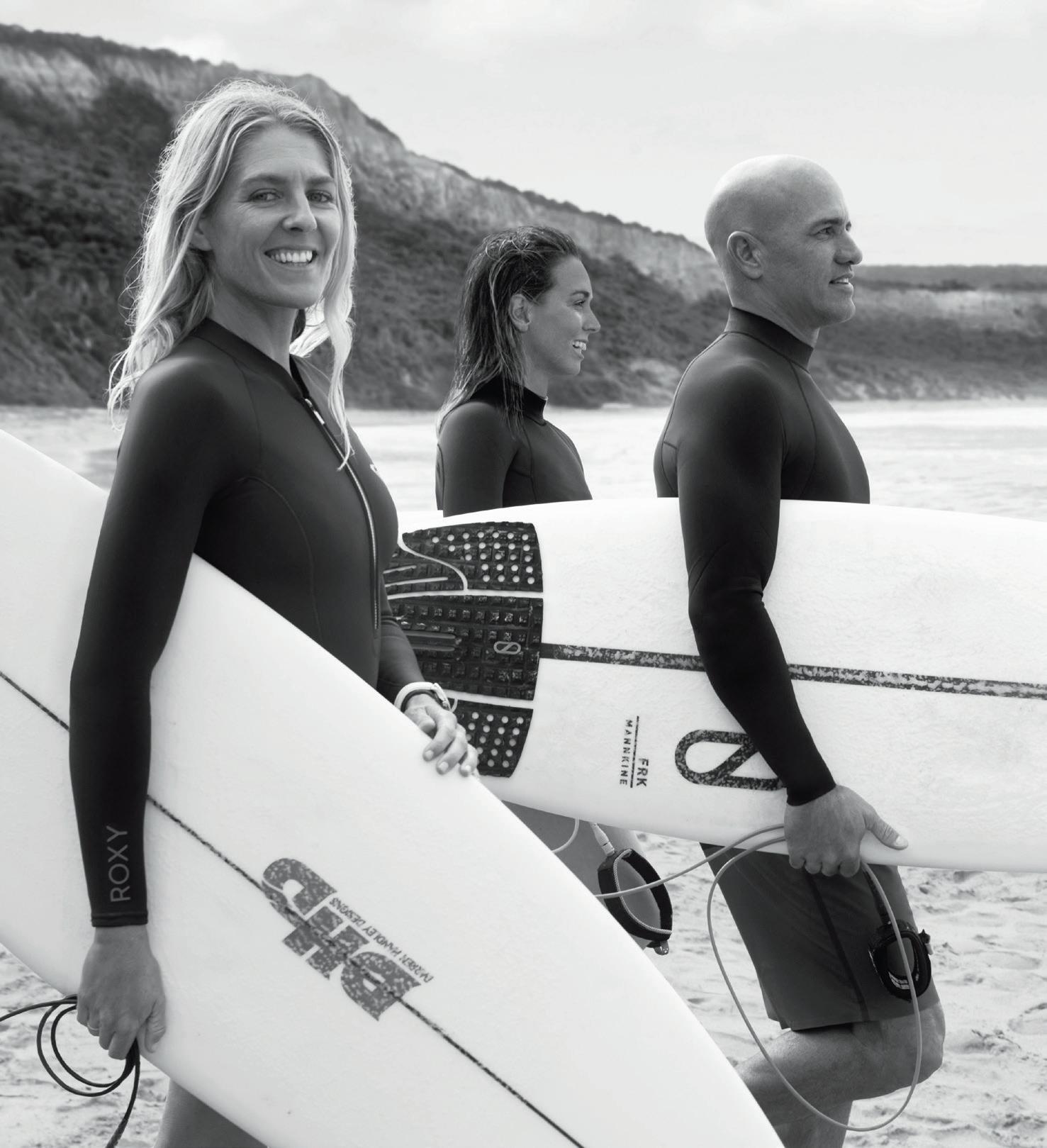



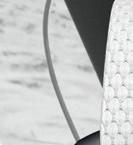
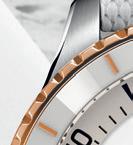


















One of my biggest character flaws is that I love sparkling water. And I don’t mean in that ‘I’m-out-at-a-restaurantand-I’m-trying-to-be-fancy’ kind of way. No. Every day, I drink sparkling water, so much so that one of my biggest fantasies is owning one of those kitchen taps that dispenses sparkling water. Stay with me, I’m going somewhere with this…
Unfortunately, I don’t have one of those taps, so for a long time, I would buy –eco-warriors, avert your eyes NOW – plastic bottles of sparkling water weekly. It weighed on me, but I also figured that everyone is allowed at least one guilty pleasure, right? But I also believe in karma, and as a lover of documentaries and Sir David Attenborough, I found myself at an impasse after being made aware of what plastic is doing to the environment. Watching doccies like Seaspiracy and A Life on Planet Earth shook me and made me realise that if I wanted to enjoy my daily bubbles, I was going to have to do it in a way that leaves me with pleasure and not just guilt. So, I got a soda machine, ditched the plastic, and bought a permanent glass bottle, and I now enjoy my sparkling water without worrying about dolphins choking in the ocean because I like my nose to be tickled by bubbles.

what you’re used to and possibly seeking out brands that align with your values. Through people like Chef Mokgadi Itsweng (page 56), I learnt why it’s important to seek out local farmers who only sell produce that’s in season, not shiny GMO fruit and vegetables without pips.
Environmentally conscious products that used to be di cult to source are now readily available; there’s Stella McCartney who refused to use real leather and now works with brands such as Bananatex™ (page 22) to create incredible designs that bolster eco-fashion.
If, like me, you love wine, you’re going to enjoy Richard Holmes’ feature on the South African wine estates leading in viticulture sustainability (page 48); while we also showcase three fine-dining sustainable restaurants (page 52), and an eco-friendly home on the West Coast (page 54).
From circular fashion and hybrid cars to global campaigns like Earthshot (which takes place this month in Cape Town), sustainability is about acknowledging that we all share one home, Planet Earth. If we decide to enjoy the things we consume mindfully, we have a chance to change the world for good.
I say all this to illustrate that while this issue is dedicated to sustainability, nobody is perfect, the journey is long, and committing to being eco-conscious means letting go of
My birthday’s in February and I’ve been hinting hard that I want a Gerda Goosen piece. Certified vegan by PETA, her ivory accessories do not using animal products or testing. gerdagoosen.com

















As always, luxury is your right, but it shouldn’t be at the expense of the environment.







THE COVER




















Going green has never looked more iridescent than with Gra ’s 15ct Colombian Emerald pear shape and white abstract drop earrings. gra .com

Nomadic State of Mind’s vegan Toe Joe sandals are handmade from rope that is partly reclaimed polypropylene cord. They are sustainable, colourfast, and machine washable. nomadicstateofmind.za.com
Comme des Garcon’s new unconventional unisex collection is inspired by “anti-perfumes”. The Comme Des Garçons Amazingreen EDP has notes of hazelnut and ivy leaves, with a smoky, musky base. skins.co.za






Swiss precision meets conscious design with the Alpine Eagle 41 XP Time For Art, housed in Chopard’s exclusive Lucent Steel, a material that has antiallergenic properties and is 80 percent recycled content. picotandmoss.co.za



EDITORIAL: MANAGING EDITOR Lerato Tshabalala lerato@yourluxury.africa PUBLISHER & BEAUTY EDITOR Ingrid Wood ingrid@yourluxury.africa CREATIVE DIRECTOR Kate Walters COPY EDITOR Tamlyn Cumings CONTRIBUTING EDITOR Leigh Herringer IMAGE EDITOR Coralie Elske DIGITAL EDITOR Jessica Levitt jessica@yourluxury.africa
ADVERTISING & MARKETING: ADVERTISING DIRECTOR Yvonne Sha +27 (82) 903 5641 I yvonne@yourluxury.africa
ADVERTISING CO-ORDINATOR Yvette Mehl + 27 (21) 439 4907 I yvette@yourluxury.africa ACCOUNT MANAGER: NATIONAL Gina van de Wall I gina@yourluxury.africa
MANAGEMENT: MANAGING DIRECTOR Yvonne Sha DIRECTOR Jacquie Myburgh Chemaly
DISTRIBUTION & PRINT: DISTRIBUTION On the Dot, Media Support PRINTED BY CTP Printers, Cape Town for YourLuxury PO Box 1053, Sea Point 8060, Cape Town. All rights reserved. Whereas precautions have been taken to ensure the accuracy of information, neither the editor nor YourLuxury Africa can be held liable for any inaccuracies, injury or damages that may arise. The opinions expressed in the articles may not reflect those of the publisher. All prices correct at time of going to print.
printers








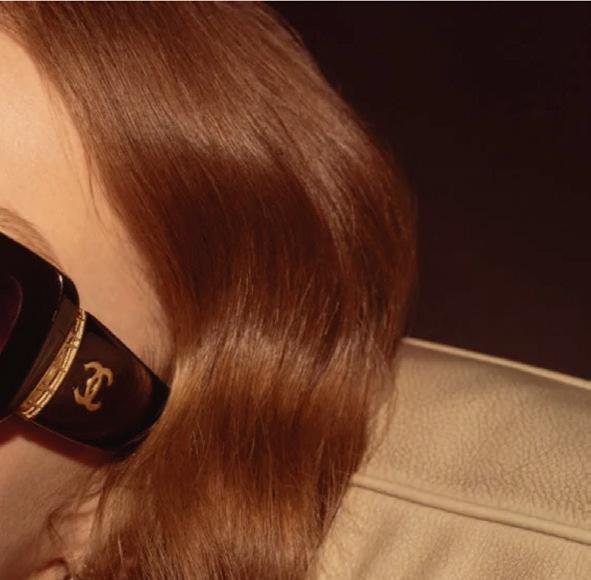

Whether you popped a bottle of Moët & Chandon on Champagne Day or have been lusting over Chanel’s Fall-Winter 2024/2025 eyewear, we celebrated the luxe life online this month. Laduma Ngxokolo, the founder and chief creative of Maxhosa, tells us about the brand’s Spring/Summer 2025 collection, and we test drive the sublime BYD Seal 7. From fashion and food to jewels and jet-set travel, we deliver the best in PanAfrican luxury.

Every week we bring you a wrap of our top stories. For the best in travel, wealth, arts, and culture, subscribe now.


IVEL GRIGOROVA
Ivel is a marketing consultant who blends her passion for art with corporate objectives, often supporting humanitarian and environmental causes. Well-versed in the Parisian luxury and creative scene, she enjoys sharing her experiences.
“I now focus on cost per wear, seeing quality and ethical fashion as smart investments that last longer. I’m also embracing upcycling trends to reduce my overall textile consumption.“
See: p22

RICHARD HOLMES
Richard is a freelance writer who is based in Cape Town, but he’s constantly keeping an eye on his next departure and destination. He’s happiest when sharing Africa’s wild spaces with his family, and still has Antarctica at the top of his bucket list.
“With rainwater collection, solar photovoltaic (PV) and a solar geyser, my wife and I are taking every step we can to make our home as low-impact and energy-e cient as possible.“
See: p48

DEBBIE HATHWAY
Debbie is an award-winning writer who thrives on hunter-gathering ideas for compelling stories that spark the imagination and stir emotions. She reboots best in nature.
“I insist on recycling everything possible at home and avoid buying anything packaged in plastic. My local baristas know me by my Chopard Happy Café Keep Cup. I take that and my SALT of Palmar Mauritius reusable water bottle everywhere.“
See: p12, p18, p52, p54






































































































































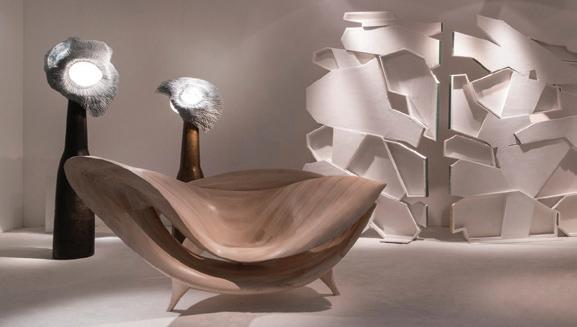
Now in its 13th year, the Salon Art + Design fair returns to New York’s Park Avenue Armory from 7 to 11 November, presenting a captivating blend of contemporary creativity and historical mastery by renowned designers, galleries, and artists from across the globe. With this year’s emphasis on innovation, expect a carefully curated collection of furniture, decor, and fine art. For more info, visit thesalonny.com.
American band Tortured Soul will headline the Music and Lifestyle Expo at on 15 November at the Sandton Convention Centre in Johannesburg. Known for their deep, soulful house music, Tortured Soul will be joined by other incredible performers such as the talented Zamajobe and Mandisi Dyantyis, making this a must-attend event for fans of live music. From 10am to midnight, it promises to be a full day of musical performances and interactive exhibits. Book your tickets at songkick.com.

Raise a glass at the Franschhoek Cap Classique and Champagne Festival on 30 November and 1 December. Set against the Huguenot Monument, this celebration of South Africa’s finest sparkling wines, featuring producers such as Graham Beck and Krone, promises a weekend of indulgence and elegance. Find out more at franschhoekcapclassique.co.za.
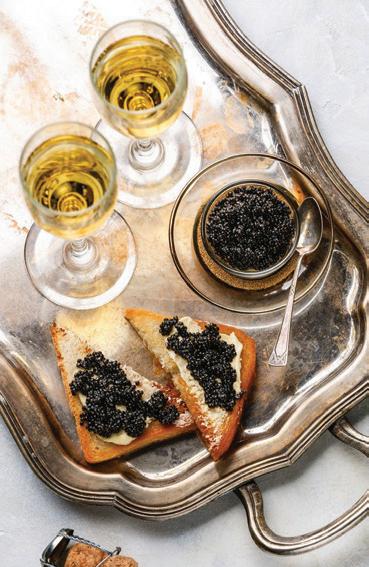
The world’s largest live awards event for architects and designers, the World Architecture Festival (WAF), returns to Singapore’s famous Marina Bay from 6 to 8 November. Marking its 17th edition, this global fair showcases some of the world’s most ambitious and creative design projects, including the Tower of Life by BAD in Dakar, Senegal, which was previously named World Building of the Year. Network with the best in the industry and attend seminars that explore future-defining architecture. worldarchitecturefestival.com
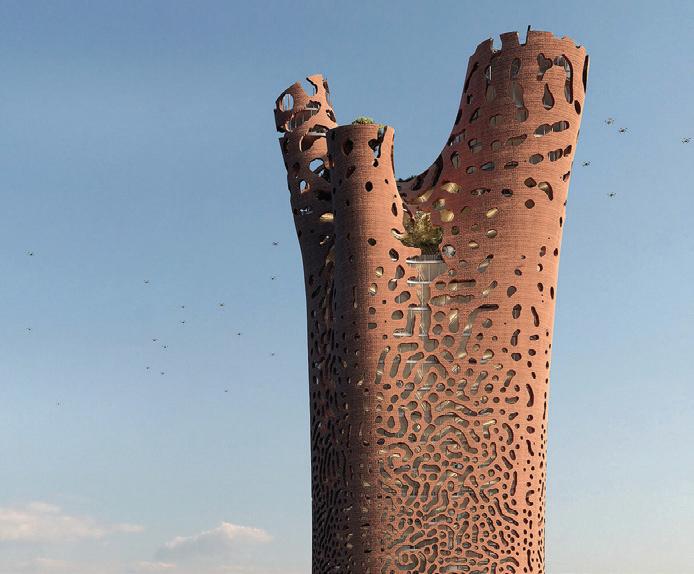
On 3 November, the Cape Town Opera presents Orpheus McAdoo at the city’s Artscape Theatre. Celebrating 25 years, Cape Town Opera is one of the largest performing-arts institutions in South Africa, and this unique performance honours African American musical heritage, blending operatic artistry with soulful rhythms. A rich, reflective experience if you’re drawn to cultural music and opera. For more information, visit capetownopera.co.za


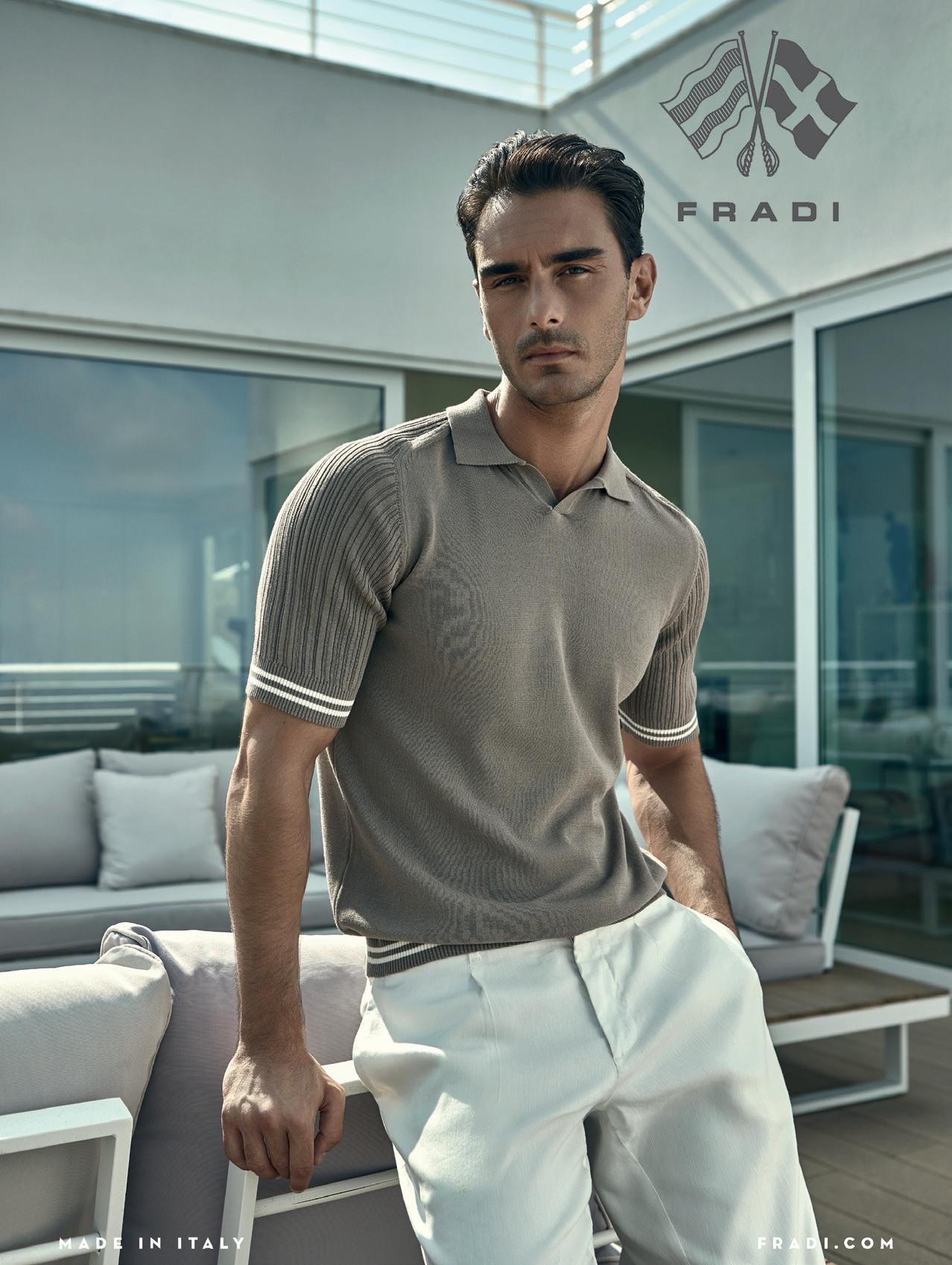

LUXURY BRANDS ARE CREATING VERSATILE, TRANSFORMATIVE PIECES THAT OFFER MORE THAN MEETS THE EYE
WORDS DEBBIE HATHWAY
Bella Hadid models Chopard’s Ice Cube collection (right), crafted from ethical 18kt rose gold, features cubes set at varying heights in an articulated design that evokes a city skyline. The cu bracelet and choker incorporate cubes hand-shaped by master artisans. POA, chopard.com, bhhboutique.co.za















Inspired by the art and tradition of the African Masai tribe, the Masai collection by Marco Bicego has a standout feature: flat golden coils reminiscent of the iconic stacked jewellery worn by Masai women. Using a unique brandexclusive technique, gold wire is wrapped around a woven chain and pressed into a semi-rigid ribbon, creating striking silhouettes. POA, marcobicego.com





FOPE’s iconic Novecento mesh, crafted entirely from 18kt gold, has been reimagined using Flex’it technology, creating a soft, flexible weave that defines the brand’s collections. The must-have Bicolor range showcases a minimalist blend of di erent gold meshes and colours in Flex’it bracelets, and they’re just as striking alone as they are paired. POA, fope.com















Neither a watch nor a jewel, and yet intrinsically Cartier, the open bracelet has a double identity. Reflection de Cartier highlights the maison’s skill at reverse setting and the contrast between the graininess of the paving, smooth lacquered elements and openwork. The dial’s reflection makes it seem like time is moving backwards. POA, cartier.com












The Seduction necklace from Louis Vuitton’s Awakened Hands, Awakened Minds high jewellery collection is platinum and yellow gold with diamonds, and features a 12.92ct octagonal step-cut Zambian emerald. The design showcases textile and passementerie expertise through brocade, jacquard, and tassel work. POA, louisvuitton.com
















PICCHIOTTI’s Reversible Xpandable™ Collection builds on the brand’s Xpandable™ technology, allowing bracelets and rings to expand and contract. The reversibility o ers two designs in one as pieces can be easily flipped and worn to reveal a di erent look. The collection includes 18kt gold designs, with or without diamonds and coloured gemstones. POA, picchiotti.com






















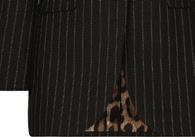


TAILORED SUITS TAKE ON SEDUCTIVE NEW SILHOUETTES THAT ARE SLEEK YET EPITOMISE MODERN STREETWEAR
COMPILED BY LEIGH HERRINGER
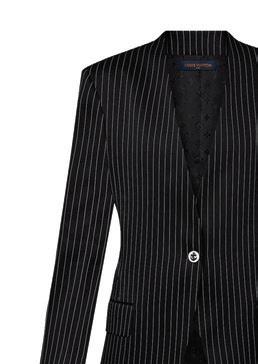







CLOCKWISE FROM TOP LEFT:








Super 120’s female tailored blazer, R15 500, mrslimfit.co.za; Single breasted pinstripe wool Turlington jacket, R61 000, Dolce&Gabbana; Long Cotton Chelsea Gabardine trench coat, POA, burberry.com; Polished loafers in black, R20 000, Dolce&Gabbana; Saint Laurent unisex acetate optical frames, POA, selected retailers; Pinstripe pants suit pants, R43 500, and collarless jacket, R65 600, louisvuitton.com




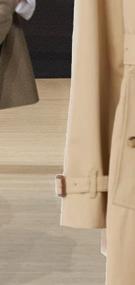


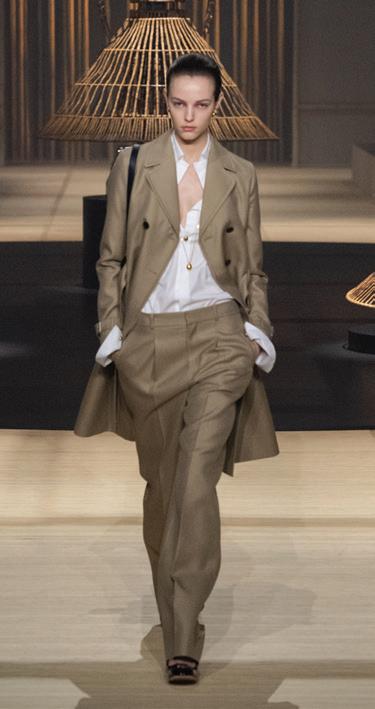

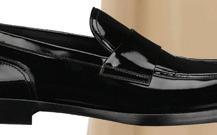



Women’s suits may not date as far back as their male counterparts, but they’ve inspired fashion over the decades. In 1933, Eleanor Roosevelt accidentally wore trousers to an o cial event as she didn’t have time to change out of her riding gear. It was scandalous, to say the least, but the First Lady smiled for the cameras and embraced her look. Then there was Marlene Dietrich who championed white suits, YSL’s iconic ‘Le Smoking’ tuxedo and Bianca Jagger’s famous wedding suit, Diane Keaton’s Annie Hall, and the ’80s power suit which catapulted shoulder pads to cult status.
Over time, suits have evolved from boardroom basics to versatile wardrobe staples that are far more fluid and comfortable to wear. Demi Moore recently wore a blazer with shorts and gladiator-style sandals at Dior, while style queen Beyoncé gave her Retrofêtes look a seductive edge by wearing nothing underneath her plunging lapel’s neckline.

At Paris Fashion Week in September, suits were once again hailed as the strong style statements at Dior and Vetements. Most notably at Saint Laurent, Anthony Vaccarello mirrored founder Yves Saint Laurent’s personal style in a quintessential tribute that was both nostalgic and modern. Key items were oversized blazers, trench coats and bomber jackets paired with shirts (sleeves pushed up), and highwaisted trousers with a tie tucked into them. And then there were the spectacles – oh how wonderfully Yves.
Looking back – to go forward – the new Met Gala theme was announced as ‘Superfine: Tailoring Black Style’ and will pay homage to the style legacy of black men throughout history, spotlighting dandyism as one of its main inspirations. In the meantime, don your suit attire with classic loafers or sneakers for style that’ll carry you from day to night.



THE BLUE BEAUTY MOVEMENT FOCUSES ON CREATING OCEAN-FRIENDLY PRODUCTS. THE SWELL IN MOMENTUM SHOWS THAT IT’S MORE THAN A TREND – IT’S PART OF A BROADER PUSH TOWARDS CIRCULAR, SUSTAINABLE BEAUTY THAT IS GOOD FOR THE SKIN AND BETTER FOR THE PLANET WORDS INGRID WOOD




With over 95 percent of its sea plants sourced responsibly, and sea kelp that is hand harvested, La Mer’s commitment to blue beauty is clear. The brand’s Blue Heart initiative is key in helping protect marine habitats, which it does through the La Mer Blue Heart Oceans Fund. La Mer The Rejuvenating Night Cream, from R4 925, lamer.co.za
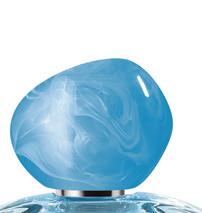
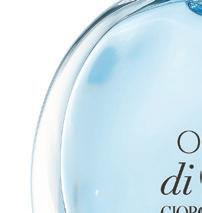
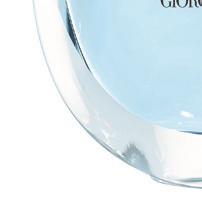


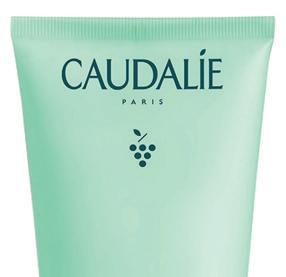





Ocean di Gioia by Giorgio Armani pays homage to the sense of freedom and invigoration the ocean gives us. Fresh and juicy with a crisp edge, it’s the perfect aquatic accessory. POA, selected beauty outlets
Thalgo has lead the blue beauty movement for more than 60 years with a commitment that goes beyond its ingredients. The marine skincare brand uses refillable systems, glass containers, and ecofriendly materials to minimise waste, and aims to meet the United Nations Global Compact and Fondation de la Mer’s Ocean Framework goals to protect marine biodiversity and reduce environmental impact by 2030. The super-hydrating Thalgo Hydrating Melting Cream is one of their sustainability heroes, containing the patented Micronised Algae Filtrate. R999, or R805 for the refill, thalgo.co.za

According to a report by the US National Park Service, 14 000kg of sun cream settles on declining coral reefs every year. The Caudalie suncare range is free from damaging chemicals, and collaborates with Coral Guardian, a programme that aims to restore and protect coral reefs. Caudalie – through its 100 percent Plastic Collect initiative – commits to recycling as much plastic waste found in the ocean as it uses. Caudalie Vinosun Protect After-Sun Repairing Lotion, R425, skins.co.za



Park


In collaboration with the World Surf League’s PURE ocean protection initiative, the Shiseido Blue Project encourages consumer awareness of beaches and oceans. The brand was also instrumental in the We Are One Ocean petition that was presented to the United Nations Convention on Biodiversity, which strives to realise healthier and more beautiful oceans by 2030. Shiseido UV Protective Compact Foundation, R765, arcstore.co.za
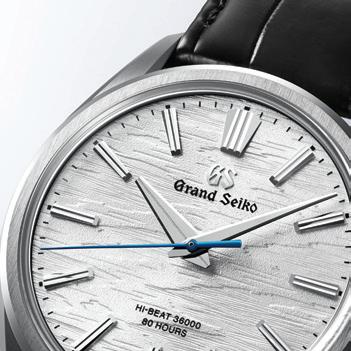

INSPIRED BY JAPAN’S RICH LANDSCAPES AND THE PHILOSOPHY OF ‘MUJŌ’ – THE BEAUTY FOUND IN IMPERMANENCE –GRAND SEIKO WATCHMAKERS CREATE WITH EXTRAORDINARY PRECISION AND ARTISTRY
The Grand Seiko Studio in the quiet town of Shizukuishi is tucked away among serene birch forests and shadowed by the majestic Mount Iwate. The building, designed by renowned Japanese architect Kengo Kuma, mirrors the brand’s ethos, ‘The Nature of Time.’ Constructed from natural wood and open to its environment, the studio is a space that allows artisans to create in a setting that reflects the subtle rhythms of the world outside its walls. Kuma envisioned the structure as a manufacturing site where nature, time, and artistry would converge.

“These are not just watches; they are works of art that honour the delicate balance between nature and time ”


But the connection between the studio and its surroundings runs deeper than architecture. The studio’s operations are meticulously designed with environmental responsibility in mind, including e orts to achieve zero emissions and maintain biodiversity. Grand Seiko has also formed meaningful partnerships with local authorities to preserve the birch forests on the Hiraniwa Plateau, ensuring the beauty of this landscape endures for future generations. This dedication to environmental stewardship reflects the same meticulous care and respect that goes into each Grand Seiko watch.
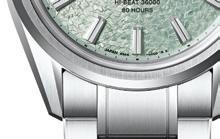


surrounding landscape. Whether it’s the gentle ripple of a nearby stream or the delicate interplay of shadow and light in a forest, every watch captures a specific moment in time. One example is the White Birch model, whose dial evokes the serene elegance of the birch forests that encircle the studio.
The Spring Drive Movement, a brand hallmark of Grand Seiko’s technological innovation, exemplifies this blend of artistry and precision. Its second hand glides e ortlessly across the dial, mimicking nature’s silent and continuous flow of time. The 9R Spring Drive, developed more than 28 years ago by a single engineer, embodies this dedication to harmonise tradition and modernity.
At the heart of Grand Seiko’s mastery lies the ‘takumi’ spirit, an unparalleled dedication to craftsmanship, and artisans at Shizukuishi translate nature’s fleeting beauty into intricate dials inspired by the
From the subtle glimmer of Zaratsupolished cases to the graceful sweep of the Spring Drive second hand, the essence of Japan’s natural beauty lives on in every Grand Seiko timepiece. These are not just watches; they are works of art that honour the delicate balance between nature and time –crafted to be worn, treasured, and passed down through generations. grand-seiko.com







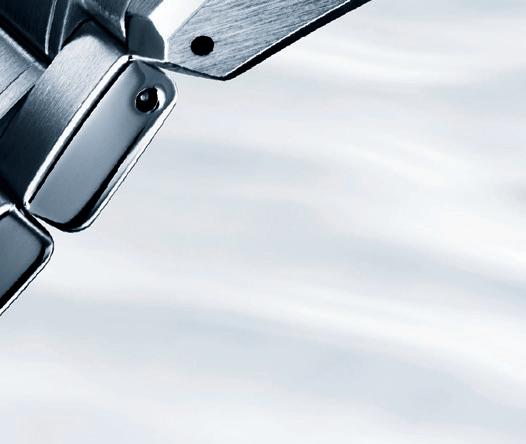
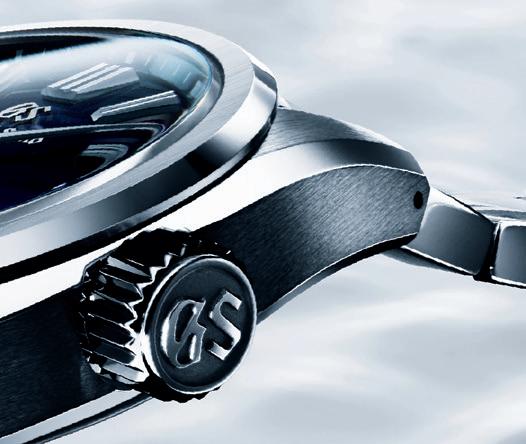




















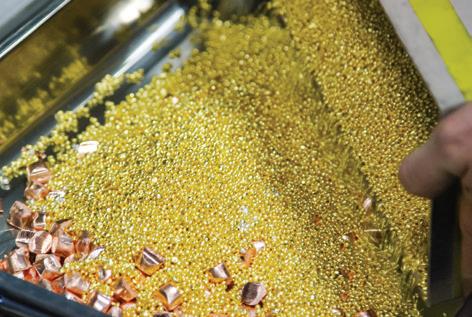
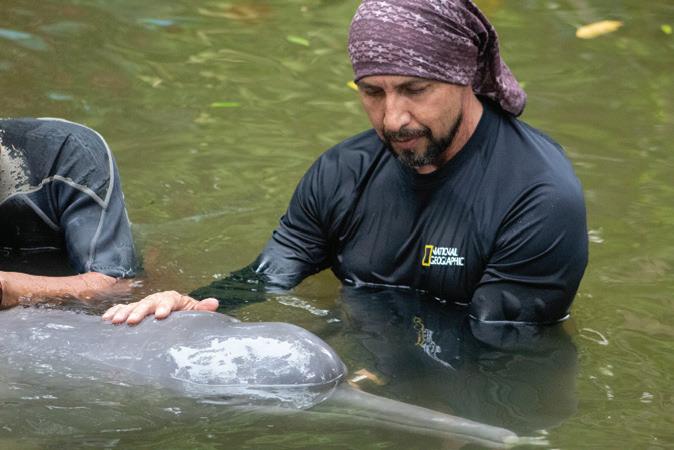
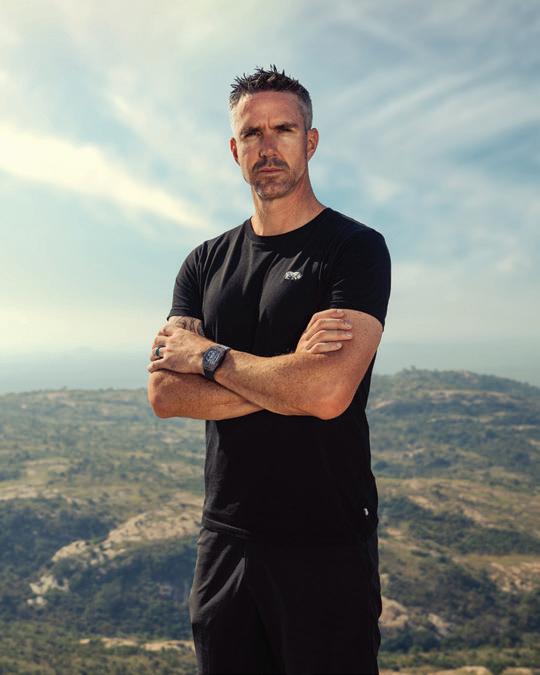

FROM TRACEABLE OAK AND ECO-FRIENDLY MATERIALS TO LEATHER MADE FROM A PAPERBASED MATERIAL, SWISS WATCHMAKING BRANDS ARE INVESTING IN PEOPLE AND PRODUCTS THAT ARE GOOD FOR THE PLANET WORDS DEBBIE HATHWAY
In 2023, Colombian marine biologist Fernando Trujillo was instrumental in facilitating a global declaration for the protection of river dolphins and their habitats. Named the 2024 Rolex National Geographic Explorer of the Year for his dedication to promoting sustainable practices to benefit local communities in South America, the indigenous Tikunas gave him the nickname ‘omacha’, referring to a dolphin that can transform into a man, in recognition of his work to safeguard river dolphins in the Amazon.
The region has more than 3 000 pink river dolphins and almost 4 000 grey dolphins – all endangered due to serious threats such as rising water temperatures, conflicts with fishermen, mining, and deforestation. However, Fernando’s efforts through the current National Geographic and Rolex Perpetual Planet Amazon Expedition are making a tangible impact. This two-year scientific exploration of the river basin uses health assessments of river dolphins as an indicator of the overall wellbeing of the ecosystem. The expedition also promotes dolphin-friendly practices among riverine communities that depend on subsistence fishing.

Rolex supports the Explorer of the Year award through its Perpetual Planet Initiative, continuing its 70year partnership with the National Geographic Society. rolex.com
IWC Schaffhausen introduced TimberTex straps, a sustainable alternative to leather made from a paperbased material, highlighting the brand’s commitment to innovation and responsible watchmaking. These straps, crafted from 80 percent natural plant fibres sourced from Forest Stewardship Council (FSC)–certified European forests provide a luxurious and eco-friendly option. Manufactured in Italy using traditional papermaking techniques and dyed with plant-based colours, each strap’s unique texture offers a refined look and feel.
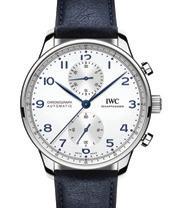
“We wanted highquality alternatives for our clients who don’t wear animal leather”
way in product design, material invention and manufacturing methods. From our early adoption of titanium, and the creation of Ceratanium®, our pursuit of innovation has yielded remarkable advances. We applied this same pioneering spirit to finding further high-quality alternatives for our clients who don’t wear animal leather.”
IWC CMO and Sustainability Committee Chair Franziska Gsell notes, “Throughout our 153-year history, IWC has led the
The straps undergo over 60 stages of production and are padded with recycled microfibre for added comfort. They are water-resistant and available in blue, brown, and black, complementing four IWC models: the Portugieser Chronograph, Portugieser Automatic 40, Portofino Automatic, and Portofino Chronograph. iwc.com
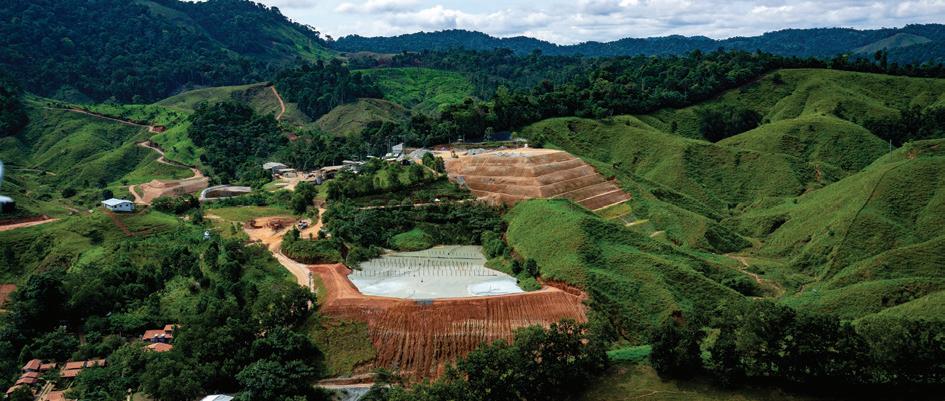
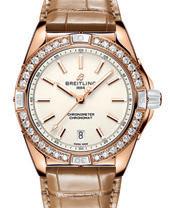
Breitling’s 2024 Sustainability Mission Report, marking the Swiss luxury watchmaker’s 140th anniversary, emphasises its position on sustainability and transparency in line with leading industry benchmarks. According to Breitling CEO Georges Kern, “Breitling is a leader in the neo-luxury sector that is casual, inclusive, and sustainable. It’s essential to have everyone engaged – from our source-material suppliers to our customers – as we continue to refine our sustainability strategy.”
Meanwhile, Chief Sustainability Officer Aurelia Figueroa highlights the brand’s shift in supply chains. “The transition from commodity-based to community-based supply chains has been fundamental to our efforts. We have engaged the communities where we are present and worked together to create programmes to support the common good.”
The Super Chronomat Automatic 38 Origins, Breitling’s first traceable watch, exemplifies the brand’s sustainable luxury approach. It features better gold and diamonds with full supply-chain transparency, backed by blockchain technology.
Owners receive a provenance record detailing the responsible sourcing of the watch’s materials, with independent verification at every step.
More than 30 percent of Breitling’s collections now feature gold and diamonds that are fully traceable and meet the criteria of its Origins label. Gold is sourced from artisanal and smallscale mining (ASM) operations prioritising worker well-being, community involvement, and environmental protection. The diamonds are lab-grown and sourced from certified suppliers, ensuring they are free from conflict, human rights violations, and environmental harm. Breitling and third parties regularly audit these suppliers on-site. Breitling also contributes a voluntary premium on each gram of gold and carat of diamonds to fund community-driven projects. breitling.com
OPPOSITE: Former pro cricketer, conservationist, and Hublot ambassador, Kevin Pietersen (top); marine biologist Fernando Trujillo (bottom)
ABOVE: Touchstone Mine in Colombia



Panerai’s partnership with Luna Rossa Prada Pirelli, which began in 2019, is driven by shared performance and technological innovation values. It has inspired the development of these watches incorporating the technologies and materials used in the America’s Cup guided by insights from the Luna Rossa team.
Their most recent creation, the sold-out Submersible Luna Rossa Carbotech™, is limited to 37 pieces in honour of the 37th America’s Cup. Carbotech™ is used in the case, bezel, and lever bridge. Created by compressing carbon fibre sheets with PEEK (Polyether Ether Ketone) at high pressure and precise temperatures, Carbotech™ o ers superior strength, durability, and an impressive strength-to-weight ratio. Lighter than titanium and ceramic, it is highly resistant to wear and corrosion, making it perfect for extreme conditions.
The titanium case back, treated with black DLC, features an engraving of the Slow Speed Torpedo – a nod to the instruments Panerai developed for the Italian Navy in the 1940s, reinforcing the brand’s deeprooted connection to the marine world. Panerai recognises the importance of safeguarding the ocean’s health. The brand has partnered with IOC-UNESCO (the Intergovernmental Oceanographic Commission of UNESCO) to support the Ocean Literacy programme, part of the UN Decade of Ocean Science for Sustainable Development initiative. panerai.com






OMEGA, the creators of the first watch on the moon, is collaborating with Privateer, a data engine empowering the future of space sustainability, to track satellites and debris in space that present dangers to human activity. Privateer’s mission is led by astrodynamicist and space environmentalist, Dr Moriba Jah, Apple co-founder Steve Wozniak, and Ripcord CEO and founder Alex Fielding (above).
Space debris is a growing problem that a ects everyone. About 40 000 pieces of human-made debris are tracked in Earth's orbit, but countless smaller, untracked objects pose additional risks. As space becomes more accessible, this junk threatens vital satellites that support communication, navigation, and climate monitoring.
OMEGA has partnered with Privateer to address this issue, contributing to data collection and modelling e orts. This collaboration reflects OMEGA’s adventurous spirit and commitment to environmental stewardship. Inspired by the iconic Apollo 8 "Earthrise" photo, the partnership aims to raise awareness of space sustainability and our planet’s fragility.
Bringing together OMEGA’s history of space exploration and Privateer’s innovative edge, the partnership also delivers on the companies’ commitment to fostering knowledge and hope. As the world faces an uncertain environmental future across land, sea, air, and space, these pioneers aim to promote a sense of environmental stewardship.
Just as the famous Earthrise picture, taken from Apollo 8, inspired the start of the green movement, this digital map of humanity’s space footprint is sure to play an equally important role in raising awareness for our planet’s fragility. omegawatches.com; mission.privateer.com

In 2022, TAG Heuer introduced its Solargraph technology in a 40mm carbon bezel timepiece, powered by the brand’s first-ever solar movement. This innovation continued into 2023 with a titanium version, and this year a more versatile 34mm model. While retaining signature Aquaracer features such as a unidirectional rotating bezel, screw-down crown, 200m water resistance, luminous markers, sapphire crystal, and a double safety clasp, the 2024 collection introduces five new dials. Two are everyday models featuring TAG Heuer’s Polar Blue and signature blue dials, incorporating the signature polar blue accents unique to Solargraph technology. The brand has also introduced mother-of-pearl dials to this collection for the first time. The material had to be specially adapted to allow light to pass through, enabling the solar movement to function while maintaining the dial’s elegance.
Powered by the solar quartz Calibre TH50-01, the Solargraph watches eliminate the need for battery changes. Two minutes of sunlight can power the watch for a day, and a full charge can last up to 10 months without light exposure. Developed in collaboration with La Joux-Perret in Switzerland, this movement boasts a five-year extended warranty. tagheuer.com
Hublot is reinforcing its commitment to sustainability and conservation with the release of the Spirit of Big Bang SORAI, the fourth in a series designed to support rhino conservation. It’s a collaboration with SORAI (Save Our Rhino Africa India), a conservation organisation founded by former cricketer and Hublot ambassador Kevin Pietersen, and some proceeds will go towards supporting the cause.
Hublot aims to harness its global platform to promote sales of these watches, increasing awareness of critical environmental issues and inspiring collective action for wildlife conservation. Only 30 pieces are available.
Meanwhile, last year Hublot collaborated with Nespresso to introduce the Big Bang Unico Nespresso Origin (pictured), a watch made from recycled materials. Used Nespresso aluminium capsules and co ee grounds were transformed into timepiece elements, including the watch strap, case, bezel, and crown. This pioneering e ort exemplifies the principles of recycling and circularity, showcasing how luxury and sustainability can coexist. Further highlighting its eco-conscious commitment, the Nespresso collaboration features the Hublot Greenbox, a reusable case that will become standard for all future collections. Crafted entirely from traceable oak and eco-friendly materials, the Greenbox promotes short supply chains and is 98 percent recyclable, reflecting Hublot’s dedication to reducing its environmental impact while innovating in design. hublot.com ■

THIS YEAR, THROUGH THE FACET FOUNDATION, DELAIRE GRAFF ESTATE CELEBRATES A DECADE OF TRANSFORMATIVE COLLABORATION WITH THE PEBBLES PROJECT
To honour 10 years of empowering disadvantaged communities in South Africa through education, social support, and innovative outreach, Delaire Graff Estate and the Pebbles Project have embarked on 10 charitable initiatives throughout the year, which will culminate in a gala event on 21 November 2024 at Delaire Graff Estate.
Laurence Graff OBE, renowned diamantaire and founder of Delaire Graff Estate and the FACET Foundation (For Africa’s Children Every Time), remains committed to giving back to South Africa, where many of the world’s finest diamonds are sourced. Since 2014, Graff has supported the Pebbles Project through FACET, fostering a partnership that has had a profound impact on education and social welfare within farming communities.
One of the most significant achievements in this collaboration is the establishment of seven mobile learning centres. These centres provide vital educational resources such as books and computers, and reaches more than 650 disadvantaged children and young people each month. In addition, a special mobile social support centre offers counselling, mental health therapy, and parental support. The impact of these services extends far beyond the classroom, offering a lifeline to children in need.


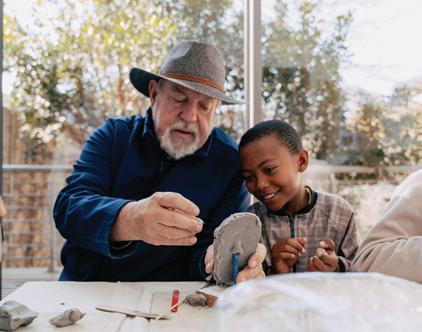
To mark the 10-year partnership, Delaire Graff Estate and the Pebbles Project have launched the “10 for 10” initiative. This campaign features 10 charitable activities throughout 2024, from job-shadowing programmes for interns at the estate to donations of Easter eggs and books. As part of Mandela Day celebrations, employees of Delaire Graff Estate volunteered with the FACET mobile learning centres, further demonstrating their commitment to the local community. “Through the FACET Foundation, we work to give back to the place that gives us our remarkable diamonds,” notes Laurence.
One of the most inspiring initiatives was an art workshop hosted by South African sculptor Anton Smit. Twenty young learners from the Pebbles Project visited Delaire Graff Estate and created clay models of Anton’s famous sculpture Faith. This workshop encouraged creativity while also providing mentorship and guidance from Anton and his team.
The Pebbles Project plays a vital role in providing children and young people from farming communities with access to high-quality education, together with essential health, nutrition, and social services. Since its launch in 2004, the organisation has made a significant difference in the lives of thousands of learners. By working closely with local farms, Pebbles Project has been able to set up and run Early Childhood Development centres and After-School Clubs. These programmes offer crucial support to rural children, helping them grow both academically and socially.

Damian and Charlene, both former participants in the Pebbles Project, are living testaments to the transformative power of this partnership. Damian, who discovered his talent for mathematics through the programme, now works as a creditor clerk. Charlene, supported by Pebbles throughout her education, is now a financial assistant.
As the Pebbles Project and FACET continue their work, the partnership’s reach grows ever stronger. With the “10 for 10” initiative and upcoming gala, this stands as a shining example of the lasting difference that can be made when philanthropy and community work hand in hand. “Giving back is all about bringing hope and helping people realise their ambitions and dreams,” says Laurence.
THE WORLD’S FIRST DURABLE, BIODEGRADABLE, AND PLASTIC-FREE FABRIC, BANANATEX® IS PIONEERING CRUELTY-FREE FASHION THROUGH COLLABORATIONS WITH LUXURY BRANDS SUCH AS STELLA MCCARTNEY, BALENCIAGA, AND COS
WORDS IVEL GRIGOROVA
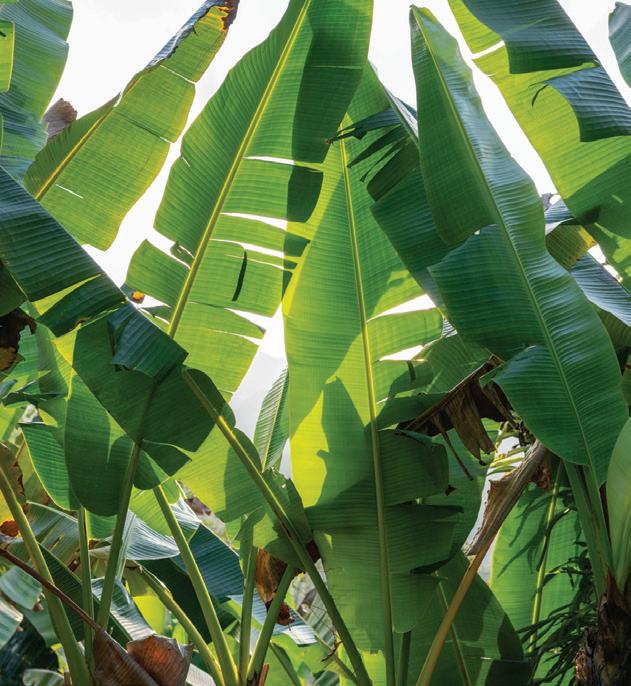
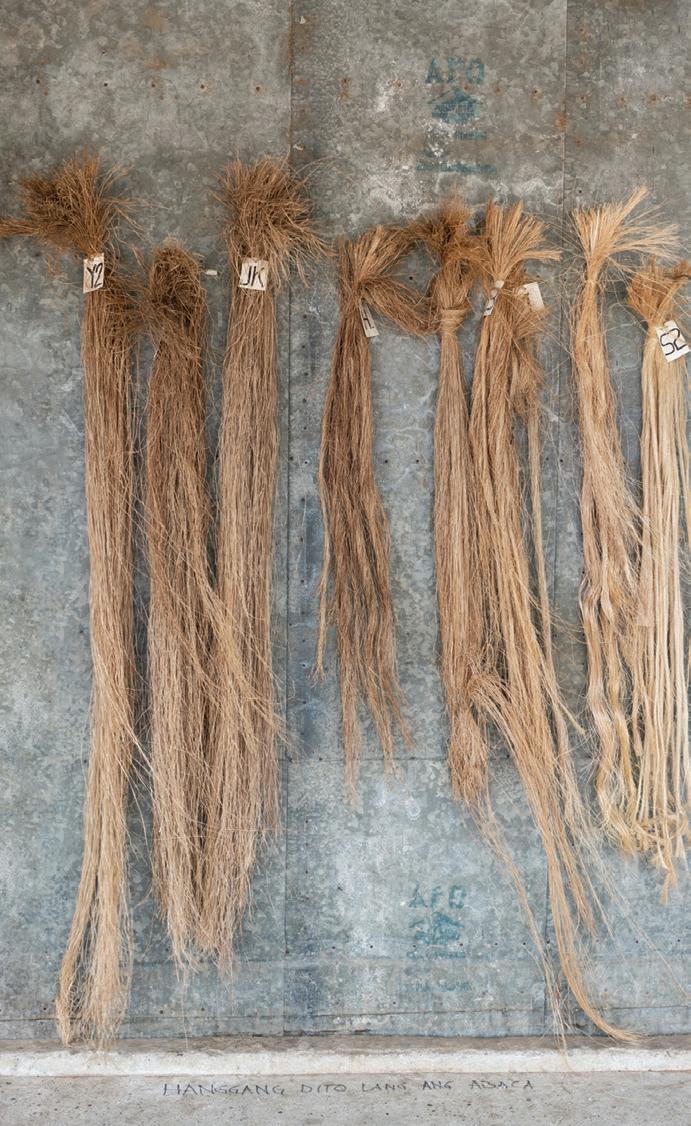
Over the past decade, the fashion industry has witnessed a significant shift as brands embrace eco-conscious luxury, responding to the urgent need for alternatives to conventional materials. Among the pioneers in this movement is Bananatex®, the world’s first durable, biodegradable, and plastic-free fabric made entirely from banana fibres. This new material offers a truly circular solution to the synthetic fabrics that dominate the market today.
Bananatex® fabric was developed by the Swiss brand QWSTION, in collaboration with yarn specialists and weaving partners in Taiwan. After three years of intense research and testing, this innovative material emerged as a sustainable textile that adheres to cradleto-cradle principles and biodegrades in both industrial composts and marine environments. “It is fully circular, compostable, and grows without chemicals, fertilisers, or other harmful substances. It’s a next-gen material for a better future,” emphasises co-founder and CEO of both QWSTION and Bananatex®, Hannes Schoenegger.

Derived from the abaca plant, a resilient banana species native to the Philippines that thrives without agricultural land, synthetic inputs, or water beyond rainfall, Bananatex® uses a cultivation method that supports thousands of smallholder farmers by providing them with a safe source of income. With the plant’s rapid regeneration and harmonious coexistence with other flora, Bananatex® is highly scalable and has the potential to restore biodiversity in many tropical regions worldwide, and play a vital role in permaculture reforestation programmes.
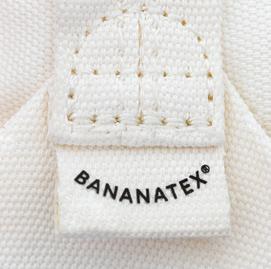
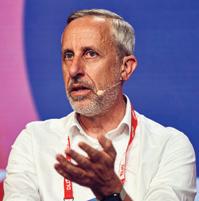
Founded in 2008, QWSTION has been committed to using natural materials from the outset, recognising early that sustainable options were limited. “After working with cotton, we began experimenting with alternative fibres such as linen, hemp, and bamboo. Then we discovered the
remarkable qualities of banana fibre,” explains Hannes. The abaca fibre, the strongest plant fibre in the world, is primarily used in rope manufacturing due to its exceptional strength and durability. It’s also used in speciality papers for the food industry, such as tea bags.
When QWSTION launched its first Bananatex® bag collection, the pioneering fabric was introduced as an open-source innovation to foster partnerships.
“The interest in the fabric was immense, which led us to establish Bananatex AG, a spin-off company with its own team and goals,” adds Hannes.
Today, both companies continue to create ecoresponsible products together while partnering with others to ensure Bananatex® gains market traction and promotes circular solutions in fashion.
“It is fully circular, compostable, and grows without chemicals, fertilisers, or other harmful substances”
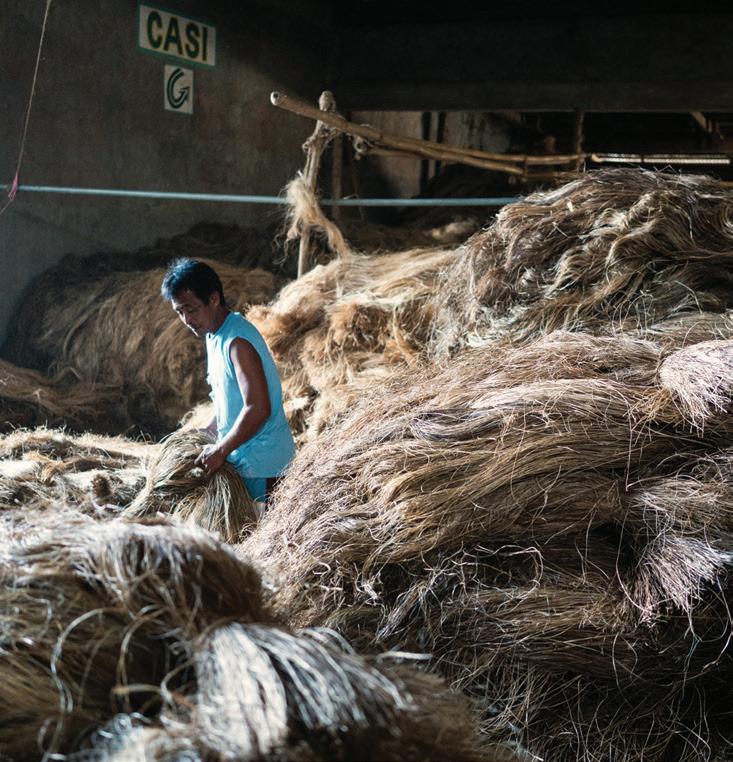
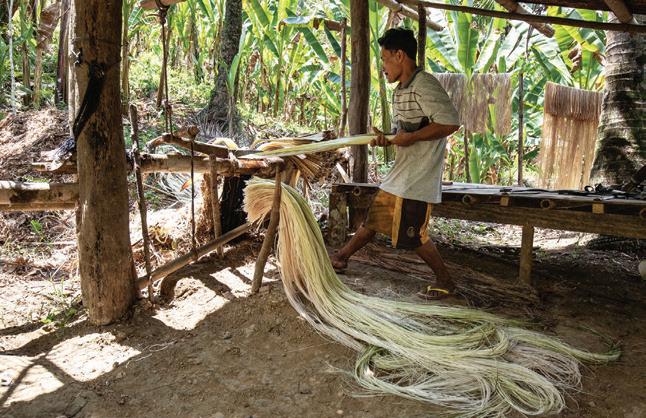
NAVIGATING BUSINESS OPERATIONS ACROSS CONTINENTS
Bananatex®, guided by the available expertise in different locations, operates globally. In the Philippines, the banana fibres are extracted through boiling and pressed into pulp sheets. Taiwan specialises in advanced textile production, transforming the paper strips into yarn, which is subsequently woven or knitted into textiles. The black-coloured yarn uses sustainable dyeing methods, certified by Oeko-Tex® Standard 100, and the natural white yarn is not dyed, and reflects the actual colour of the fibres. Design and global distribution is overseen in Switzerland, ensuring transparency and strong partnerships throughout the supply chain.
The company coordinates key activities across continents while keeping a low environmental footprint to ensure that sustainability remains at the core of its practices. “We are in contact with everyone along the supply chain, from farming communities to high-fashion brands. Working vertically is the future as we’ve all somehow lost the connection between the things we use or eat and where they come from,” Hannes explains.
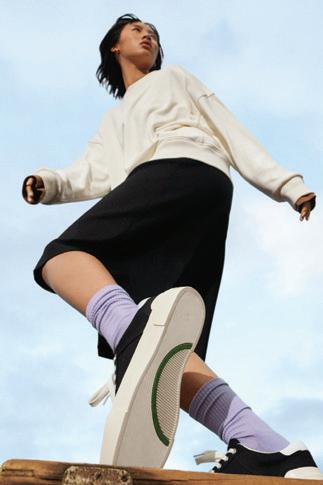
Collaboration is a fundamental aspect of Bananatex’s philosophy, shaping everything from fabric development to the final product. “We’re happy to share our innovation with anyone who has a genuine intention to replace conventional materials with Bananatex®. Brands reach out to us, and we find common ground based on a mutual understanding. From there, the development of fabrics or products begins, and hopefully, it continues. We want our next-gen material to grow because positive impact only happens at scale,” shares Hannes.

In 2023, Stella McCartney’s launch of the iconic Fungi Forest toile de Jouy print in Bananatex® waterproof fabric (left), amplified the message of environmental stewardship and has resonated with eco-conscious consumers in the fashion world. Furthermore, partnerships with global brands such as COS (above right), H&M (above), and MCM introduce Bananatex® to a broader audience, accelerating the adoption of alternative textile materials and guiding consumer habits toward more ethical and ecoresponsible choices.
“Balenciaga has launched a vegan edition of its iconic Triple S sneaker, featuring an upper crafted from Bananatex® material”
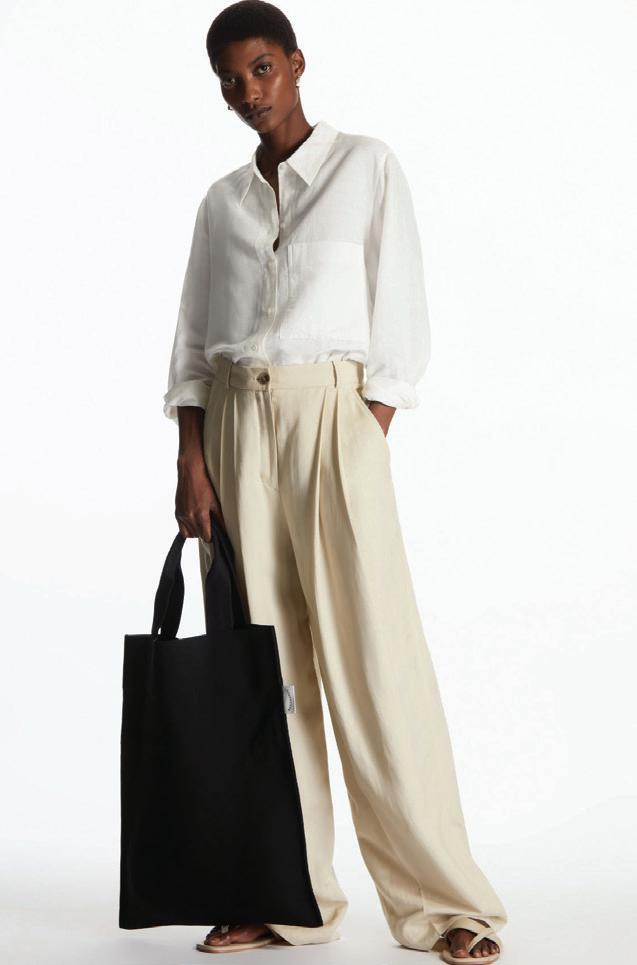
PETA FASHION AWARDS WINNER
Balenciaga has launched a vegan edition of its iconic Triple S sneaker (below), featuring an upper crafted from Bananatex® material. Developed over several years of collaboration, the sneaker is now available in natural-white and all-black colourways, and are dyed without harmful chemicals. This partnership received the PETA Fashion Award 2024 for Best Sneaker this August, highlighting the shared commitment of both brands to cruelty-free fashion. Looking ahead, Bananatex® is focused on expanding its offerings with new constructions of woven and knitted textiles, along with new finishes, natural dyes, and other innovative methods for applying pigments. With exciting projects in the pipeline, including Bananatex® denim, the brand is poised to further reshape the fashion narrative. bananatex.info ■
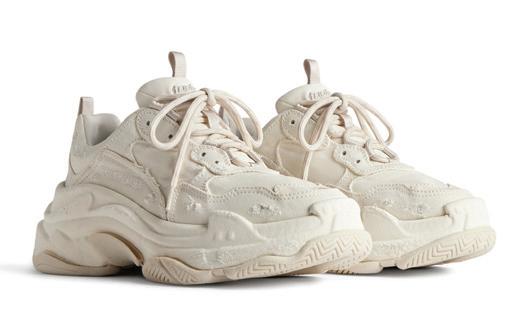
G-STAR HAS UNVEILED THE DENIM, A SERIES OF UNIQUE, LIMITED-EDITION JEANS CREATED BY GUEST DESIGNERS WITH OTTOLINGER AS FIRST COLLABORATOR, AS SEEN ON LOCAL STYLE ICON SARAH LANGA

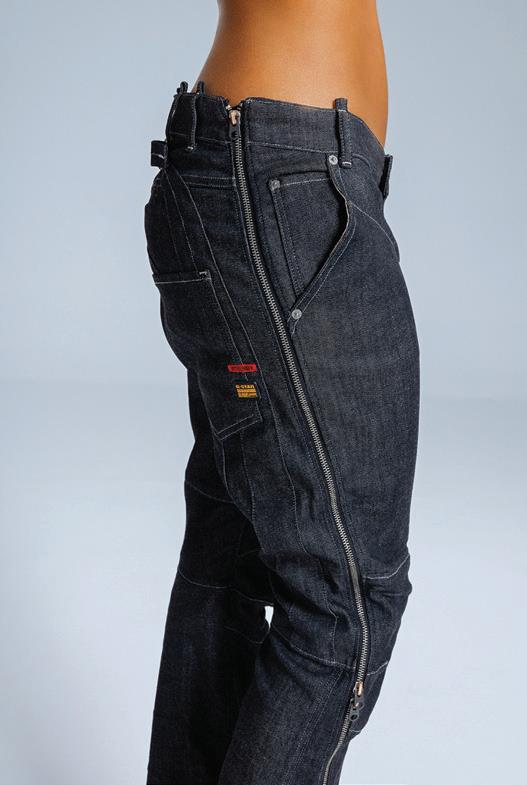
THE DENIM, a new collaborative series by G-STAR, is creating a space for guest designers to reimagine jeans. Kicking off the series is the independent label Ottolinger, known for its avant-garde approach to fashion. The Berlin-based duo behind the brand, Christa Bösch and Cosima Gadient, have used the classic G-STAR Elwood – the first 3D-designed denim, launched in 1996 – as inspiration and given it a modern twist.
“This initiative is all about providing guest designers the opportunity to explore their creativity and push boundaries in denim,” says G-STAR’s chief brand officer, Gwenda van Vliet. She adds that the inspiration from the Elwood shows remains relevant and that Ottolinger’s captures “the innovative spirit we aim to foster”.
Their exclusive designs, The Denim 001 and The Denim 001 Zip, creatively reimagine the Elwood’s signature features, like the knee pads and distinctive stitching, resulting in super slim fit jeans with a contemporary flair. “For us, design is very much a mode of storytelling,” says Cosima, highlighting the importance of tailoring classic fits for a woman’s body that builds on G-STAR’s rich history.
Some key features of The Denim 001 include a low waist, striking gold hardware, and side zips at the bottom, while The Denim 001 Zip showcases full-length side zips with sleek silver hardware.
Ottolinger’s reputation for challenging conventional fashion is reflected in their use of experimental techniques, such as burning, tearing, and innovative fabric treatments, which have cultivated a raw, distressed aesthetic that is now synonymous with the brand.
The campaign features local lifestyle icon Sarah Langa, who models The Denim 001 Zip, demonstrating the seamless adaptations made to this classic G-STAR design. g-star.com
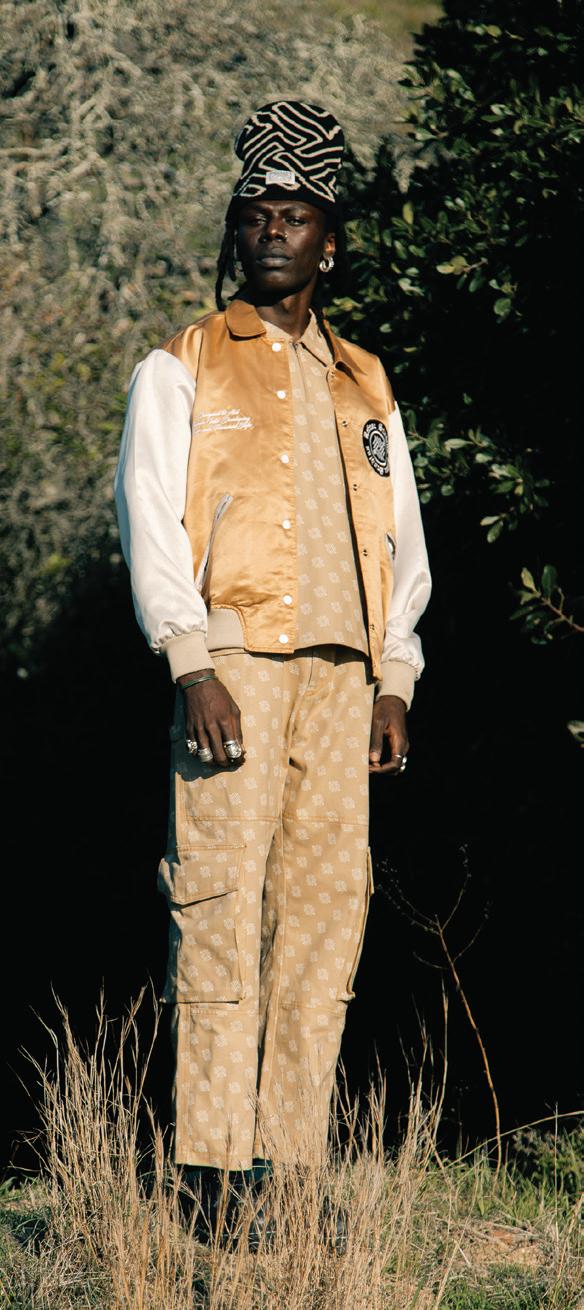
Refuse Clothing is a South African luxury streetwear brand founded in 2016 by Malcolm Tebogo Makgope and Minenhle “Minnie” Memela. The name “Refuse” carries a powerful dual meaning. As Malcolm explains, “It represents our refusal to give up, pushing forward no matter the challenges, while also embodying our commitment to sustainability.” This ethos of resilience and responsibility is woven into every garment the brand creates.
ECO-FASHION IS ABOUT REDUCING THE NEGATIVE IMPACT OF FASHION ON THE PLANET AND PROMOTING ETHICAL PRACTICES THROUGHOUT THE SUPPLY CHAIN. THESE THREE SOUTH AFRICAN BRANDS FOCUS ON CRAFTSMANSHIP WHILE SUPPORTING SMALL-SCALE, LOCAL ARTISANS WHO USE SUSTAINABLE TECHNIQUES
WORDS LERATO TSHABALALA
Sustainable fashion has roots dating back to the 1960s and 1970s, when the environmental movement began to gain traction. The rise of environmental consciousness during this period saw people becoming aware of the negative impacts of industrialisation, including pollution and resource depletion. Early champions of ecofashion were often tied to broader social movements, such as the counterculture and anti-consumerist ideologies. The hippie movement, with its focus on natural lifestyles, was also a key influence. Following this, vintage clothing, second-hand shopping, and handmade garments gained popularity.
By the 1990s, the first eco-conscious fashion brands began to emerge. The early 2000s also saw the rise of certification bodies like the Fairtrade Foundation and the Global Organic Textile Standard (GOTS), which helped regulate and promote sustainable fashion practices. Brands such as Stella McCartney, which was founded in 2001, have made sustainability a core part of their identity, refusing to use leather or fur and promoting ethical materials.
Today, eco-fashion is a growing global movement, supported by both luxury and high-street brands and fuelled by consumers who are increasingly aware of the ethical and environmental impacts of their clothing choices. Closer to home, some fashion brands are intentional about sustainability, looking into the traceability of the garments, recycled materials, and biodegradable clothing that won’t harm the environment or add to landfills.
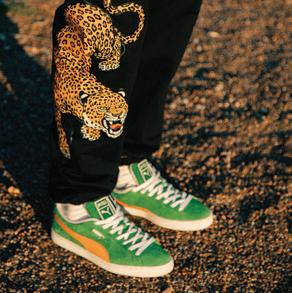
Minnie’s focus on using 100 percent cotton and eco-friendly fabrics demonstrates their commitment to creating fashion that lasts — both in terms of durability and environmental impact. “Refuse emerged to disrupt the fast fashion industry (characterised by the rapid production of inexpensive clothing that often ends up in landfills),” Malcolm
says. The brand takes pride in its local production process, sourcing materials ethically and empowering South African communities. Every piece is a celebration of African heritage, crafted with sustainability in mind.
Malcolm and Minnie, both from Durban, launched Refuse Clothing with a bold vision: to merge the rich aesthetics of African culture with modern menswear. Their designs are deeply inspired by traditional Nguni (Zulu) textures and prints, and their collections include everything from graphic-branded streetwear to bespoke, finely crafted pieces. According to Malcolm, their goal has always been to aim for both cultural impact and global recognition.
The brand’s recent collaboration with South African retail giant Mr Price marks a significant milestone. According to Malcolm, “This collaboration allows us to share our designs and story with a larger audience while staying loyal to the core values that define Refuse.” This partnership highlights the brand’s continued ascent in the fashion world.
With plans to open a store at The Watershed at the V&A Waterfront in Cape Town, Refuse Clothing’s unique blend of street culture and sustainability is transforming the fashion landscape, one collection at a time. refuseclothing.co.za
The name “Mors” comes from the Afrikaans word for “waste” (vermorsing), reflecting the brand’s mission to turn discarded materials into something beautiful and practical. Mors Design, a Cape Town-based brand founded by Raihana Govender, specialises in handmade luxury goods, creating products that are not only stylish, but use upcycled materials and natural fibres.
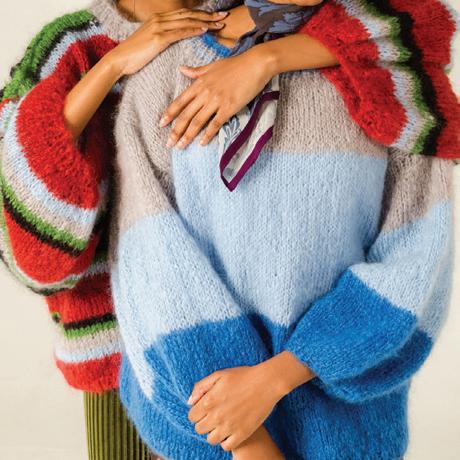
“Mors Design was born out of a love for beautiful silhouettes and a passion for sustainable design,” explains Raihana. The brand, which launched in 2015, started by using recycled tyre tubes to create bags and accessories, and has since expanded to include a knitwear line called MoLuv.
MoLuv features a range of vibrant mohair jerseys with exaggerated sleeves and bold colours, all crafted from sustainably sourced mohair. “Our mohair is farmed in the Karoo, where Angora goats are hand-shorn twice a year with no harm to the animals. The process is entirely natural,

from hand-combing to handdyeing,” says Raihana. Each piece in the MoLuv collection is handmade by skilled female artisans from local communities, meaning that every product carries a personal touch. “No two pieces are identical, and each reflects the quirky aspects of the knitter who spent hours weaving love into every stitch.”
Mors Design’s commitment to sustainability goes far beyond materials. The brand tackles waste and overproduction by using upcycled tyre tubes for their bags and natural fibres for their knitwear. Even the packaging is eco-friendly, made from recycled canvas umbrellas, adding another layer to the brand’s sustainability character.
“Our clientele is predominantly international at the moment, but our products are designed for everyone,” says Raihana. Whether it’s their bold, colourful knits or eco-friendly handbags, Mors Design offers a unique blend of luxury and sustainability. Raihana advises aspiring sustainable fashion entrepreneurs to focus on sourcing ethical materials and improving their production processes. morsdesign.com
In an era dominated by fast fashion, POLO South Africa is charting a new course towards sustainability. Their latest venture, a collaboration with local Merino wool experts Gerber & Co., has resulted in a capsule collection of 100 percent South African Merino wool knitwear. This marks the brand’s first foray into traceable, sustainable fashion as part of its ‘POLO Purpose’ initiative — a bold statement in a world increasingly aware of fashion’s environmental impact.
Alia Peer, Creative Director of POLO South Africa, reflects on the significance of this move, “We’ve always supported natural fibres, but this collection takes our commitment to a new level. By using Merino wool in a fully traceable way, we celebrate a remarkable natural resource grown right here in South Africa. What’s more, this wool is completely biodegradable. If it ever ends up in a landfill, it won’t just break down — it’ll enrich the soil.”
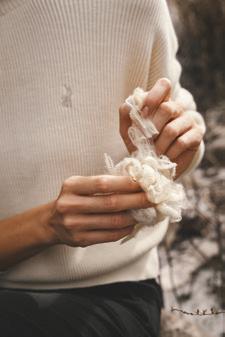
The collection itself is a tribute to POLO’s heritage. Drawing from the brand’s archives, the team created two
timeless jersey styles: a quarter-zip and a full-zip, available in neutral shades like un-dyed wool, charcoal, and olive. Each piece carries a label indicating the vintage year of the wool’s shearing, offering an unprecedented level of transparency. The wool is certified by the Responsible Wool Standard and the Sustainable Cape Wool Standard, South Africa’s highest certification for ethical wool production.
The collection is also unique in its approach to local production. This is the first time a South African retailer has fully embraced a farm-to-closet model. Stefan Gerber of Gerber & Co. explains, “This project is about more than just beautiful clothes. It’s about creating jobs, supporting local economies, and promoting sustainability. We want consumers to feel proud of wearing a product that supports South African craftsmanship and responsible fashion.”
South Africa produces 42 million kilograms of wool each year, with 70 percent being Merino wool, mostly destined for export. Deon Saayman, CEO of Cape Wools, highlights the importance of this collaboration, saying, “South Africa is known globally for the quality of its wool, but very little of it is used locally. This collection is a step towards changing that by giving South African consumers access to our best resources.” polo.co.za ■
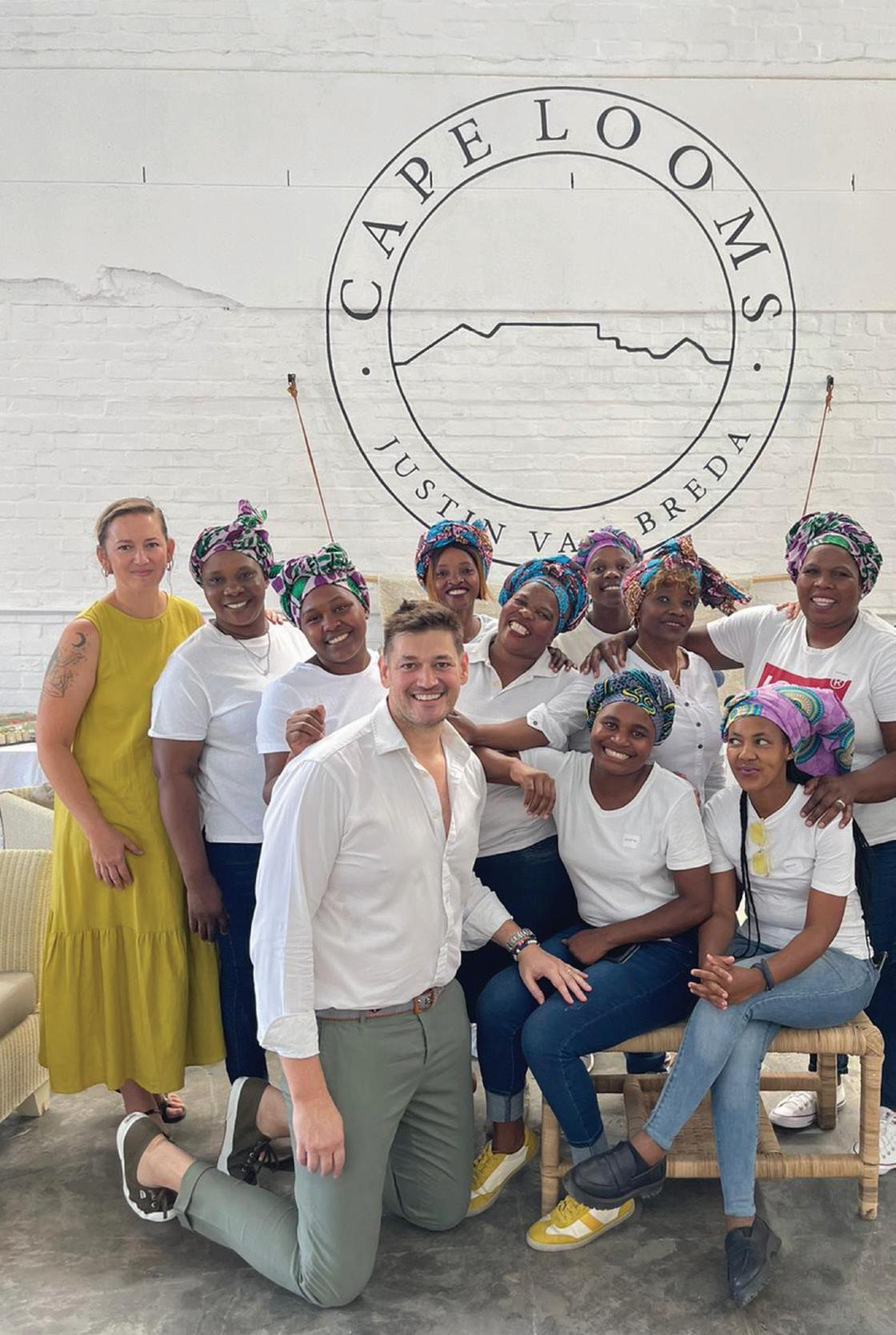
SOUTH AFRICAN INTERIOR AND FURNITURE DESIGNER JUSTIN VAN BREDA IS COMMITTED TO CRAFT AND COMMUNITY. WE CHATTED TO HIM ABOUT HIS CAPE LOOMS PROJECT AND THE CAPE CRAFT SCHOOL, WHICH OPENS IN 2026 WORDS LEIGH HERRINGER

Justin Van Breda is an incredibly tall – and handsome – man who has a great presence when he enters a room. He’s also genuinely nice and one of those guys whose colleagues often become his friends. Follow his Instagram feed and it’s clear he loves working with people from all over the world, be it design collaborators in the United States or hand weavers on the tip of Southern Africa.
Born and educated in Cape Town, Justin took a gap year in 1999. He headed to the UK where he started working for Nicky Haslam’s NH Design on Ringo Starr’s country home. “It was a baptism of fire managing the curtain makers, specialist painters, tailors, and furniture restorers,” he told Jenny Rose-Innes, author of British Designers at Home. “I spent three months commuting up and down finishing the installation. At the end of my second year there, Nicky offered me creative director – I was 25 years old”.
Three years later, Justin went on his own and opened JVB, his design shop on London’s Pimlico Road just behind Sloane Square. He has since launched awardwinning furniture collections and his own fabrics, as well as the Cape Weaver Rattan Collection. This was a fabulous collaboration with international interior designers Nina Campbell, Amanda Lindroth, and the South African-born Mally Skok, among others. Each piece they designed was handwoven by the Society of the Blind in South Africa.
It was during lockdown when a community of female weavers was left without work that Justin decided to start Cape Looms. “I come from a sheep-farming family and my grandmother’s sister, who is 101, started goat farming for the South African mohair industry in 1947. I’ve always considered it a privilege to be able to work with the weavers, and seeing the change a project like Cape Looms can have on someone’s life has given me a sense of purpose as I move into the next phase of my career,” he says.
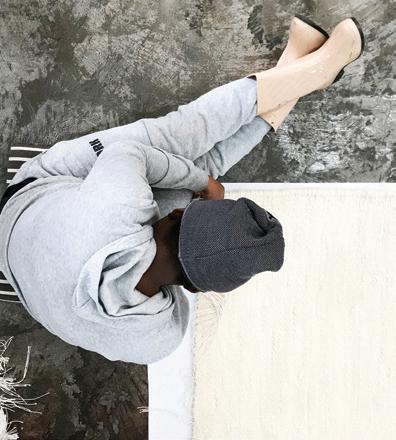
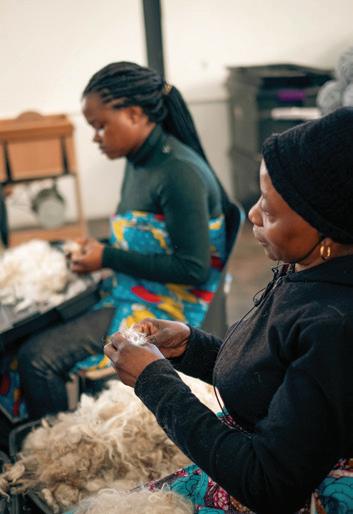
“Seeing the change a project like Cape Looms can have on someone’s life has given me a sense of purpose”
Cape Looms is an outreach programme that not only provides employment but passes on the heritage skill of female weavers in South Africa, and as Justin explains, engenders positive change on the ground in these communities. Founded in February 2022, Cape Looms employs a team who, from weaving and spinning to the prep and final finishes, make traditional flat-weave rugs out of mohair and wool. The rugs are individually hand-spun and handwoven, so each one is different. “They are a beautiful, natural, sustainable, wonderful product,” Justin enthuses.
This year, he formed the Cape Craft School Foundation, a South African NGO, which aims to educate 200 creative, young learners between the ages of 16 and 25. Students will be taught a wide range of sustainable crafts as well as the business skills they need in the workplace, or to empower them to set up small enterprises within their communities. Justin says, “We intend to create a generation of crafters educated in design on an international level, which when paired with heritage crafts, will result in desirable products that can be sold on a global platform, completing the circle in a way that the money comes back and sticks with the maker.”
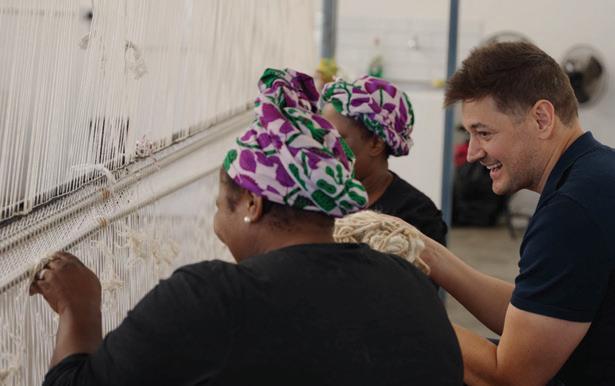
programmes and online sales for alumni.
A mandatory curriculum includes subjects such as creative thought and conceptual design, how to run a small business, soft skills like marketing and presentation, and weekly trauma and life skills group therapy sessions. Elective subjects range from weaving, carving, sculpture, and sewing to furniture joinery, ceramics, glass blowing, fabric painting, and CMT cutting. Jewellery, gemstones, leather and ironwork are also listed. In addition, an annual exhibition of products by the graduating class will give students exposure and encourage designers and retailers to work with them. The most admired work of the year will be sent to Paris and exhibited as part of Design and Fashion Weeks.
With a growing development board and team, and overwhelming advice and support from charities and donors, the school will have continued mentoring
“As a non-profit, we need funding, and it costs about $5 000 per student, per year. People can fund a student, a year group, a course, or donate to the endowment. We are also looking for people with skills they would like to share and who can engage with teachers, advisors and personnel,” he explains.
While Justin lives between London and Gloucestershire, Africa – and being African –is a passionate part of his motivation to give back. “I have been very fortunate, and I would like to take that knowledge and put it to good use,” he concludes. ■
For more information and details on how to get involved, please visit capecraftschool.com or capelooms.co.za
KEEPING














It takes superhuman senses to craft a Lexus.
Sight that uncovers flaws invisible to the untrained eye. Hearing that detects the tiniest missing beat in an engine. Touch that feels every micro imperfection.
That’s why every Takumi Master has 60 000 hours of expert training. It’s also why every Lexus comes with a standard 7-year warranty.
lexus.co.za









is about cultivating a MINDFUL APPROACH to daily life, where every action, decision, and interaction is INFUSED WITH INTENTION and awareness. But it also transcends mindfulness, extending into areas such as SUSTAINABILITY and ETHICAL CONSUMPTION, recognising how your choices IMPACT THE ENVIRONMENT and society. Conscious living is about CREATING HARMONY between your values and lifestyle, and making decisions that ALIGN WITH YOURSELF, OTHERS, AND THE PLANET. We believe conscious living and sustainability is the NEW LUXURY, and we encourage you to slow down as you enjoy the next few pages, brought to you by LEXUS
The new Lexus GX “premium off-roader” is due on South African roads in the first quarter of 2025 and promises a thrilling drive. In its first redesign since its initial launch in 2002, the new GA-F platform (shared with the LX) and the V6 twin-turbo engine ensure an optimal balance between power, fuel economy, and quietness.
When the GX launches, Lexus will be promoting the Overtrail Project, which aims to bring the enjoyment of an outdoor lifestyle into your vehicle, coupled with the awareness and desire to protect our natural surroundings.
“The new GX focuses on a way of living and has been developed to allow customers to experience a new aspect of Lexus, which aims to coexist with nature,” explains Koji Tsukasaki, Lexus GX chief engineer. “It is not just a model change, but a game changer that turns a new page for Lexus. The GX is a true off-roader… however, you don’t have to push the limits all the time. In fact, one of the many joys of owning this car is that it performs like a diver’s watch. Even if its full functionality isn’t always needed, it’s great to know it’s always capable. We believe that having the peace of mind that comes with the ability to go anywhere will inspire new experiences.”
FUTURE FORWARD
The next chapter of the Lexus Electrified Vision arrives in South Africa in early 2025 with the all-new RZ battery-electric SUV. This is the first Lexus Battery Electric Vehicle (BEV) built on a dedicated electric vehicle platform.

According to the brand, “The new RZ retains all the signature Lexus elements customers have come to appreciate, but now with zero exhaust emissions.” Two decades of Lexus expertise in battery and hybrid technology have been poured into the RZ 450e, resulting in a battery designed to perform at the highest levels, while Lexus designers have worked to ensure the RZ maintains the famous Lexus benchmarks of luxurious Takumi craftsmanship and impeccable build quality.
Lexus plans to achieve a full line-up of BEVs in all categories globally by 2030, and aims to sell 100 percent BEVs on the road to a carbon-neutral society by 2035.
INNOVATE TO PRESERVE
Bamboo's growth rate is 10 times faster than regular timber and it has the capability to absorb large amounts of CO2, making it able to promote a more carbon-neutral society. Bamboo has long been used by Lexus in car manufacturing. It was chosen for its concept cars in 2008 and is used in all vehicle production today. Most recently, bamboo was used throughout the interior of the LF-ZC, the next-generation BEV concept car. According to the brand, “The Bamboo CMF (Color, Material, Finish) Concept represents Lexus’ sustainability e orts, focusing on circular resource use while delivering fresh experiential value to customers through an innovative interior design. In this way, Lexus is exploring new possibilities for traditional materials through technology, combining the dual principles of environmental and social sustainability, and luxurious design.”
In Japan where the cars are manufactured, the proliferation of bamboo forests has become a threat to the ecosystem. “It’s a great opportunity for us to contribute to local economy and society by collaborating with communities in rural Japan in our aim for a circular economy,” explains the brand.

Bamboo, cedar, sandalwood, gaiac wood, and hay are captured in the Byredo Tree House Room Spray, which was inspired by the life and work of self-taught carpenter, architect, and designer, Takashi Kobayashi. Takashi has created more than 140 tree houses in Japanese forests since the production of his first tree house in 1993. Using driftwood, reclaimed wood, and recyclable waste materials, his design techniques reflect traditional Japanese architecture. To personalise your space, a single spray of Byredo Tree House on a cold light bulb or wall heater will encourage the evocative scent to spread when the heat comes on R1 900, skins.co.za ■

BAGGING IT
The recent Bamboo 1947: Then and Now exhibition by Gucci in Tokyo’s Ginza Gallery marked 60 years of the Italian brand in Japan, and highlighted the Bamboo 1947 handbag. A magnificent example of the importance of craft in Japanese culture, the famous bag is recognised by its curved bamboo handle. The exhibition featured 60 vintage Bamboo 1947 handbags from the ’80s and ’90s, while a special collaboration with contemporary Japanese artisans saw the style reinterpreted using a range of techniques rooted in the country’s history. Featured artists included metal craftsman Morihito Katsura, lacquer artist Ai Tokeshi, ceramic artist Hirotsune Nakazato, photographer Daido Moriyama, and painters Yui Yaegashi and Nami Yokoyama.


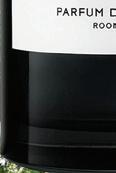




THE FUEL-EFFICIENT LEXUS RX 450H+ PROVES ECO-FRIENDLY DRIVING DOESN’T HAVE TO MEAN SACRIFICING PERFORMANCE AND ELEGANCE FOR VIRTUE WORDS EDWARD MOLEKE MAKWANA

Lexus has always been synonymous with luxury, and its hybrid offering is no exception. The RX 450h+ Plug-in Hybrid Electric Vehicle (PHEV) is not just a sports utility vehicle (SUV), it’s a bold statement of intent. A fusion of Japanese tradition – renowned for its precision and artistry – and the most advanced automotive technology, it represents a new era of luxury embodying the brand’s commitment to carbon neutrality. It also reflects a harmonious blend between environmental responsibility and the refinement of Takumi skill and craftmanship, which is mastered over 25 years.
Every detail of the vehicle has been meticulously made, from the handfinished Takumi elements to the intuitive technology that surrounds the driver. Comfortable, sophisticated and designed with a sense of serenity, Lexus has redefined the modern luxury driving experience, proving that sustainability and elegance can – and should – coexist.
A perfect example of duality done right, the Lexus RX 450h+ is bridging the gap between power and sustainability by offering a driving experience that is as exhilarating as it is eco-friendly. It feels like a bona fide electric vehicle, delivering an impressive electric-only driving range that covers most daily commutes in near-silent grace. For the eco-conscious driver, this is a vehicle that delivers the best of both worlds — luxury and sustainability without compromise.
At the heart of this Lexus is its finely tuned hybrid system. Paired with a 2.5-litre inline 4-cylinder engine and an electric Continuously Variable Transmission (CVT), this system produces a combined output of 227kW, enabling the Lexus RX 450h+ to accelerate from 0 to 100km/h in just 6.5 seconds. However, speed and performance are only part of the story. What truly sets this vehicle apart is its ability to deliver exceptional fuel efficiency — achieving as low as 1.3 litres per 100km in combined cycles. With emissions as low as 29g CO2 per kilometre, drivers can enjoy high-performance luxury in an environmentally friendly way.

PREVIOUS PAGE:
Top and pencil skirt, Lika Clothing; Peitho earrings, Inanna necklace, and Peitho’s Cousin ring, all Athena A; Karl Lagerfeld sunglasses (6047S004) and faux snakeskin handbag, Europa Art




Unlike most plug-in hybrids, where the engine takes over once the battery is depleted, the Lexus RX 450h+ offers a seamless transition into hybrid mode. Even when you’ve exhausted the electric range, it continues to recharge as you drive, maintaining impressive fuel efficiency and reducing your overall carbon footprint. The handoffs between electric and petrol power are so smooth, they’re almost imperceptible – allowing you to focus on enjoying the journey in quiet confidence.
Through selectable modes, drivers can tailor each journey’s experience. Whether you opt for EV mode, which locks the car into electric driving, or Auto EV/HV mode, which balances power needs with efficiency, every drive is an exercise in thoughtful engineering.
“A perfect example of duality done right, the Lexus RX 450h+ is bridging the gap between power and sustainability”
The interior is expansive and minimalist with perforated semi-aniline leather, ambient lighting, and a panoramic glass roof. Seats are heated and ventilated, while a 21-speaker Mark Levinson® Premium Surround Sound System elevates the in-cabin experience.
Other thoughtful touches include: a wireless charger for front passengers, USB-C outlets, and a standard 120V AC outlet, which makes staying connected effortless. With multiple interior and exterior colour options, you can tailor your RX 450h+ to reflect your own personal style.
An innovative and unique driving experience that balances advanced hybrid technology with the time-honoured craftsmanship of Lexus, the RX 450h+ is for those who seek more than a means of transport. It’s a statement of values and aspirations, and the ultimate expression of the art of conscious living. ■
WORDS KIRSTEN CURTIS
Lexus is renowned globally for its impeccable design, blending luxury, craftsmanship, and cutting-edge technology in ways that captivate the senses. More than just vehicles, Lexus represents moving pieces of art that embody elegance, precision, and a commitment to sustainability.
In a recent collaboration with Decorex Africa, Lexus invited six local interior designers to create exhibition pods inspired by its vehicles. The result was a blend of automotive mastery and interior design ingenuity, with each pod reflecting the ethos and craftsmanship that make Lexus an iconic luxury brand.

MINK INTERIORS
The pod by Mink Interiors was influenced by the Japanese principle of Omotenashi –mindfulness and hospitality. Inspired by a sunset drive in the RX500h, the design integrated natural tones, Japanese elements, and greenery, creating a serene space. The vehicle’s meticulous attention to detail was mirrored in the thoughtful use of materials, resulting in a striking, yet tranquil space.
ARTEP STUDIO
Artep drew inspiration from the quiet confidence of the RX500h. The pod combined metal and stone to create a space that embodies the Lexus design philosophy – where strength meets serenity. Using premium materials, Artep depicted craftsmanship, authenticity, and sustainability with a sanctuary that celebrated the balance between nature and technology.

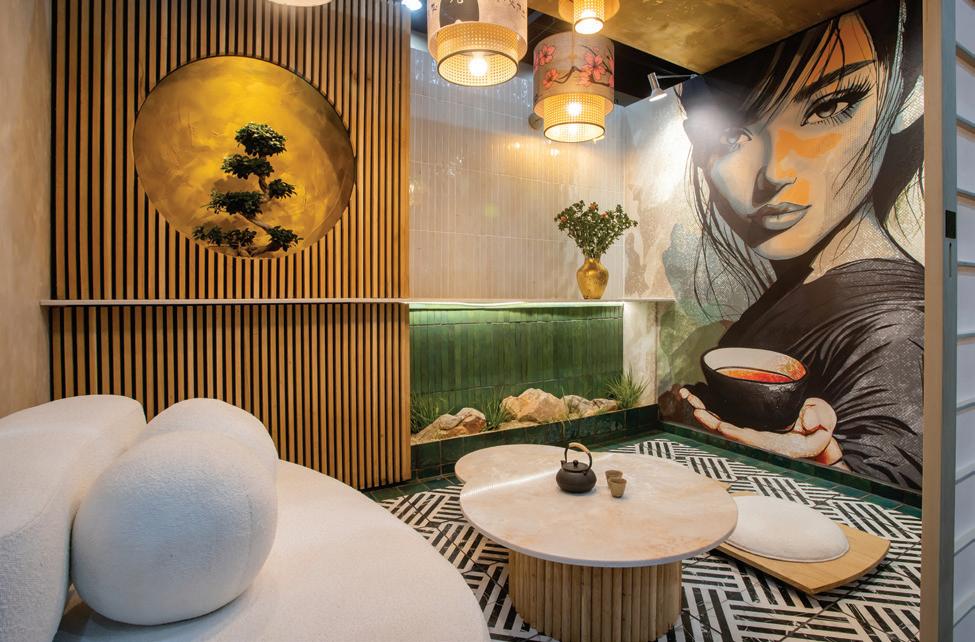



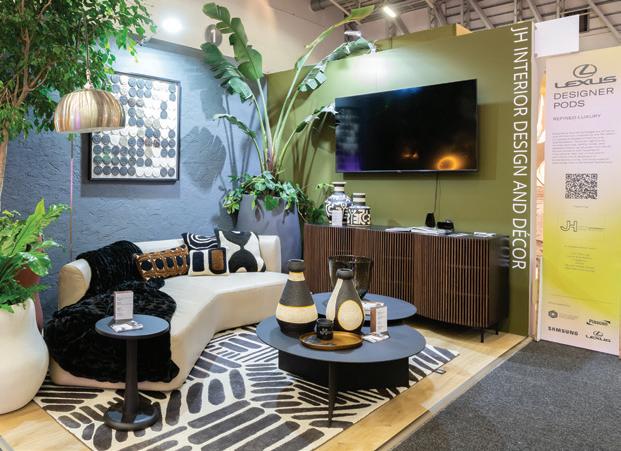

MoTSO DeSIGNED’s pod drew from the luxurious design of the RX350 F Sport. The use of angular shapes, inspired by the car’s grille and lighting, together with a copper colour palette, reflected the vehicle’s visual appeal. The design highlighted the precision of a Lexus with a space that was both striking and sophisticated.
JH Interior’s muse was the RX450h. Incorporating luxurious stitched leather and natural wood, the design played with tactile elements and African-inspired touches to add a local flavour. The pod was a tribute to the brand’s seamless integration of bold design and subtle craftsmanship.
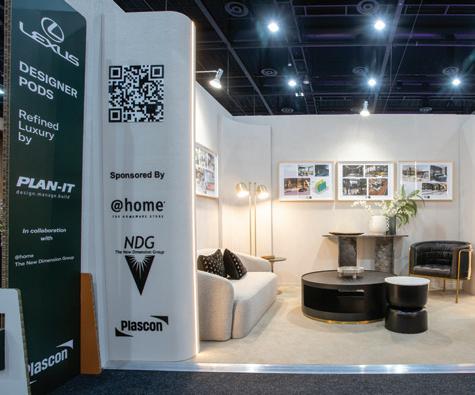
The team at Plan-It was inspired by the refined luxury and calm of the RX500h. The pod, with its soft, organic shapes and natural materials, moved away from sharp lines and metallics, opting instead for a neutral palette of warm beiges and tactile textures, creating a serene, grounded space.
Anna Correia’s pod was inspired by the clean lines and spacious interior of the RX500h. Blending neutral tones and metallic accents, the design was a balance of sophistication and sustainability. The Lexus hybrid technology influenced the choice of eco-friendly materials and natural textures such as velvet, glass, and metals, creating a space that emphasised environmental consciousness. The furniture designs echoed the curves of the vehicle, bringing the Lexus design language into a modern and engaging lounge setting.
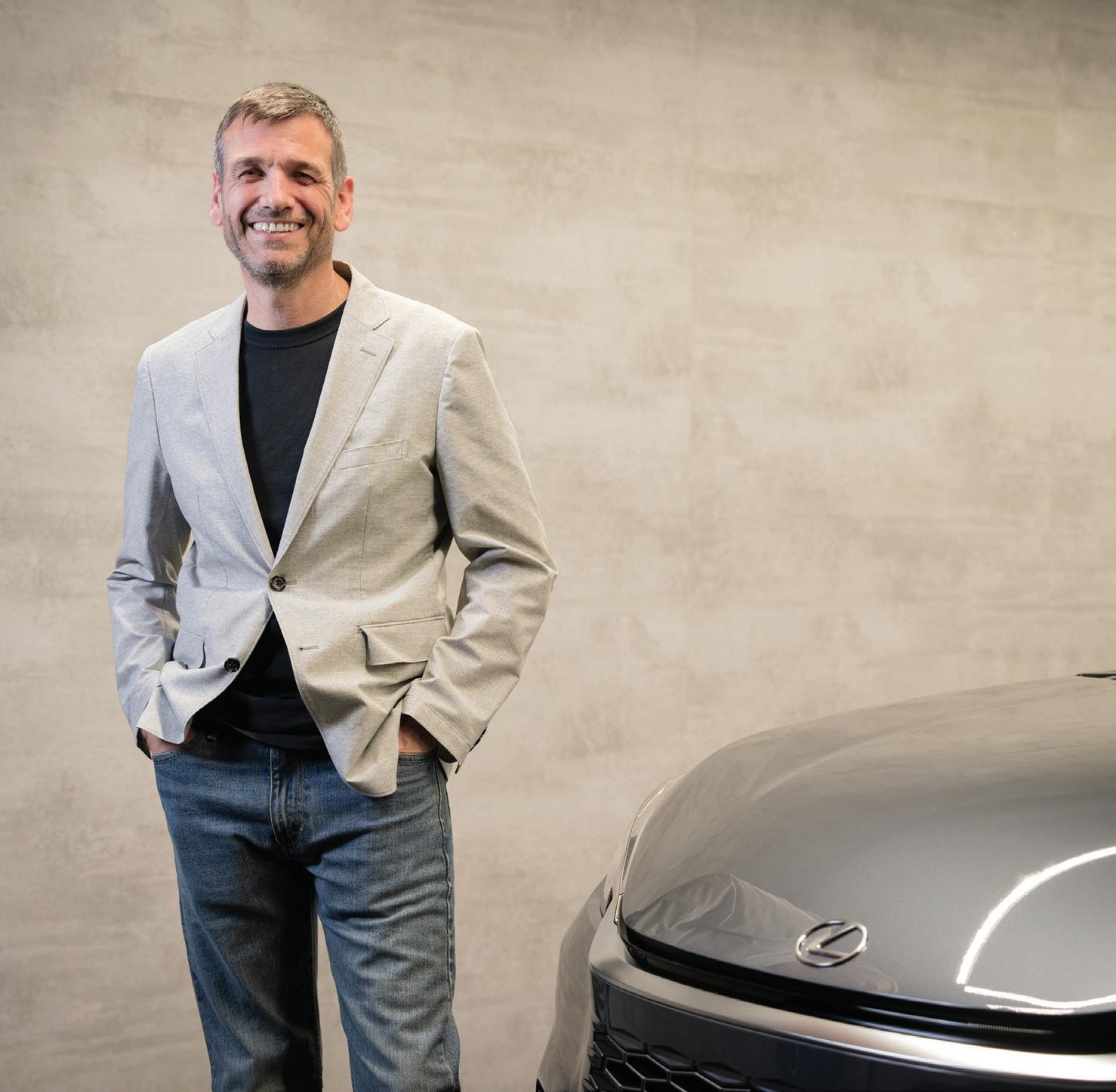
AS A LUXURY BRAND THAT TRANSCENDS THE AUTOMOTIVE INDUSTRY, CHIEF BRANDING OFFICER AND HEAD OF TOYOTA AND LEXUS GLOBAL DESIGN, SIMON HUMPHRIES, EXPLAINS HOW LEXUS IS CONSTANTLY EXCEEDING EXPECTATIONS BY ANTICIPATING EVER-CHANGING CUSTOMER NEEDS WORDS INGRID WOOD
Since its launch in 1989, Lexus has constantly challenged the status quo, redefining the way we use and enjoy luxury vehicles. It has also always embraced change and integrated sustainability into its design philosophy.
But sustainability is more than just the value of the material, explains Simon Humphries, Chief Branding Officer and Head of Toyota and Lexus Global Design.
“Sustainability must be at the heart of what you’re doing. You must believe in it and address it in a way that brings people into the fold. We want to create a situation where the technology and design is there to anticipate the user, and create a different experience for each of them. The biggest task for Lexus designers is not just the form of the exterior, but also the way the driver interacts with the product and materials.”
Delivering engaging dynamics where driver and car become one is key to the next-generation Lexus Battery Electric

Vehicles (BEVs), as seen at the 2023 Japan Mobility Show. There, Lexus revealed a range of concept models under the theme ‘Pushing the Boundaries of the Electrified Experience’, one of which was the sporty Lexus Future Zero-emission Catalyst or LF-ZC, which will enter production in 2026. “It is in many ways our North Star in terms of what we’re doing to change the course of automotive manufacturing and design,” says Simon.
The LF-ZC embodies the vision of functionality and beauty without compromise and focuses on circular resource use while delivering experience to customers through design. “Up until now, automotive interiors, for example, have largely been based on hierarchy – the more premium, the more leather, chrome, and wood. But if we take those three materials to be part of an unacceptable future, then it’s not just a case of finding materials that are sustainable in a logical sense, but also something that people really want to own.”
Simon adds, “We used a lot of bamboo in the LF-ZC. We’ve partnered with a few rural villages that provide bamboo, which would otherwise be discarded, and we then process it into a range of mediums. For instance, it is mixed with plastic to lessen the quantity of plastic we use. We use it in paint pigment and fabric, while crushed bamboo mixed with carbon makes it lighter in weight, which is another aspect of sustainable automotive design because it adds to better efficiency later on.”
“I think what makes Lexus special is its ability to enable. Are we achieving that right now? That’s up to everyone to decide, but that’s a guiding star for us. Technology is finally at a level where we can start to anticipate what people might want, and then we can adapt.”
The digitalised Intelligent Cockpit of the LF-ZC enables customers to access functionality when they need it. For example, the new software-enabled hardware continuously updates and adjusts functions based on driver preferences, while next-generation voice recognition uses advanced AI technology to provide customers with “a service experience reminiscent of conversing with an attentive and accommodating butler”. This ‘butler’ also provides a personalised driving experience, using data to make route and mode recommendations that align with the driver's preferences.
“Sustainability must be at the heart of what you’re doing”
“Probably one of the biggest changes over the last year is AI,” says Simon. “It allows us to integrate mobility on a more personal level – down to learning your needs, your desires, your quirks. And it’s not a big brother type of thing – it’s about cutting through too much information and bringing it down to what’s absolutely necessary for you.”
According to Simon, reducing carbon footprint is another opportunity with endless possibilities, even though there’s still much work to be done. “The fact that you’re going to consume something creates an opportunity to give back in another way. It must be designed as a total ecosystem. For example, batteries are getting more efficient, but the vehicle itself might only be used for 10 percent of the day. There’s currently a lot of energy being created and thrown away because it’s not created at the right time. Imagine utilising this vast ecosystem of batteries to create a scenario where they’re part of an energy storage system which benefits others.” Simon adds, “We’re going to have supercomputers in these cars, effectively, and that’s a lot of computing power that could be put to other uses.”
And then there’s the big buzz around autonomous driving, and while that is moving forward, safety is a key concern. “If you’re really going to enjoy fully autonomous driving, you’ve got to be able to trust the car. As designers, we need to look at how to build that trust. We can also consider how to manage and curate experiences that fill time, as autonomous driving means you have more of it.”
Until now, the development of vehicles has been pretty much a one-sizefits-all mobility partner getting people from one place to the next, but that is undoubtedly changing. “Sooner or later, the ‘all-rounder’ will decrease,” predicts Simon. “The biggest movement I hope to see is away from one vehicle having to do everything, to a future where most mobility needs are met in a more efficient manner. It’s a great time for innovation.” ■
CHEF EARL AKIDO OF AKIDO RESTAURANT IN SANDTON IS A MASTER OF JAPANESE CUISINE, AND HIS JOURNEY IS AS INTRICATE AND METICULOUS AS THE SUSHI HE CREATES
WORDS MONALISA MOLEFE
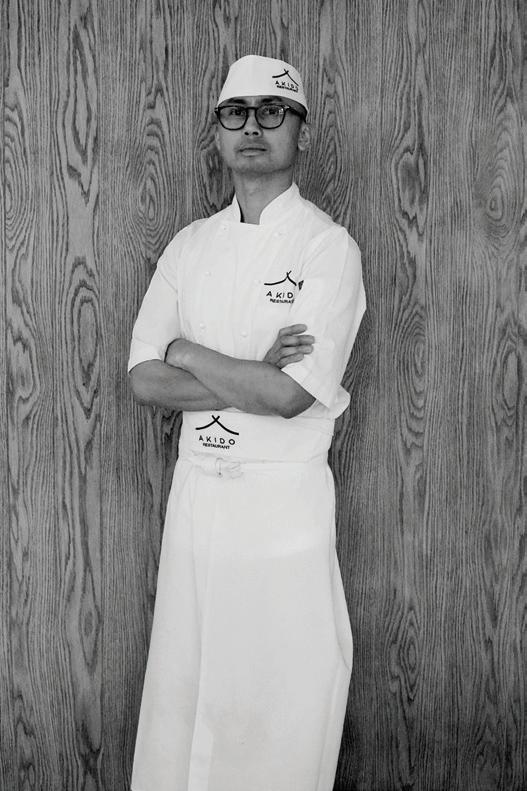
Architecture, with its emphasis on precision and structure, seems a natural fit for a chef born into a traditional Asian household. Yet even as a young boy, Earl Akido sensed that this path was not truly his own.
The early 2000s marked a pivotal moment in Southern Africa as the sushi craze began to take hold. Japanese cuisine, with its focus on balance, aesthetics, and the purity of ingredients, captivated Earl in a way that architecture never had. At the age of 20, he made a bold decision that would change the course of his life – he left his architecture studies to immerse himself in the world of sushi.
But if architecture is a science, sushi is an art – and like all great art, it demands more than skill; it requires passion, patience, and an understanding that perfection is not a destination, but a journey.
Chef Akido has spent two decades in the culinary world, including a notable tenure as head chef at Nobu in Cape Town. Today, he is the owner of Akido Restaurant, located in the heart of Sandton in Johannesburg.

WHAT IS YOUR CULINARY PHILOSOPHY, AND HOW DOES IT INFLUENCE THE DISHES AT AKIDO? Every sushi chef must prioritise tradition. Without it, innovation isn’t possible. At Akido, we focus first on rich tradition, especially in a city like Johannesburg, which is very westernised. We return to the basics, implementing and presenting them in a simple yet proper way, focusing on everything from rice preparation to cutting techniques and execution. Sushi isn’t just rice and fish; it’s about the rice’s temperature, the fish’s thickness – every detail matters. At Akido, our daily pursuit is perfection, and that’s what we revolve around.
WHAT MAKES A PERFECT OMAKASE EXPERIENCE AND HOW DO YOU PERSONALISE IT? Omakase means “I’ll leave it to you”. It’s about trust. We create a balanced experience, tailoring each dish without overpowering flavours. My tasting menu balances hot and cold kitchens – appetisers from the hot, and sushi from the cold. We add personal touches, such as adjusting nigiri for left-handed diners or using less wasabi if preferred, ensuring every detail enhances the experience.
WHAT ROLE DOES SAKE PLAY AT AKIDO? Sake is a staple in Japanese households and a key element in highend restaurants, especially in regions like Ginza, Tokyo, and Kansai. Sake varies by region, with different rice breeds and polishing ratios, much like the way wine varies by grape. There are more than 20 000 types of sake available across Japan, and we curate our selection to complement our dishes; we’re even releasing a sushi and sake pairing menu soon. Besides high-end options, we’ve got more accessible choices to ensure guests enjoy a well-rounded experience.
HOW DO YOU SOURCE AND AGE YOUR FISH?
We use the traditional jukusei wet-ageing method to enhance the natural flavours. Approximately 80 percent of our fish is sourced from Cape Town, and we use premium ingredients from Japan to maintain a minimalist approach. Ageing times vary – tuna ages for two weeks, salmon for five days, and white fish for three to four days. This centuries-old Japanese technique isn’t commonly practised outside of Japan and is often misunderstood, but we continue to push boundaries to deliver exceptional flavour profiles.
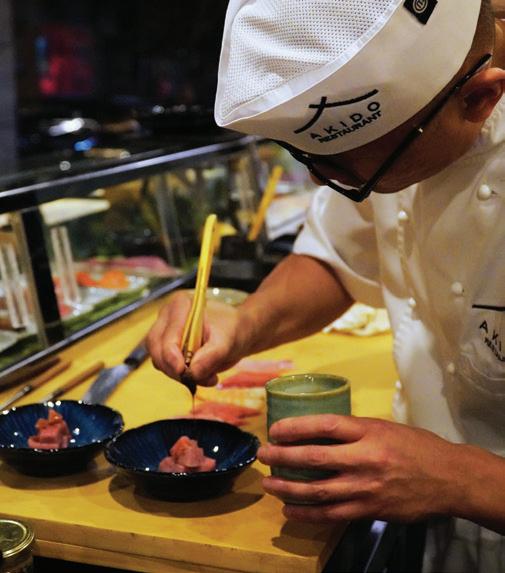
WHAT HAS BEEN THE MOST CHALLENGING DISH FOR YOU TO PERFECT?
Eel sushi is particularly interesting because it doesn’t easily adhere to the rice – it’s a very stubborn fish. It's not the most visually appealing either. But working with eel teaches you patience. It’s a humbling experience.
“We continue to push boundaries to deliver exceptional flavour profiles”
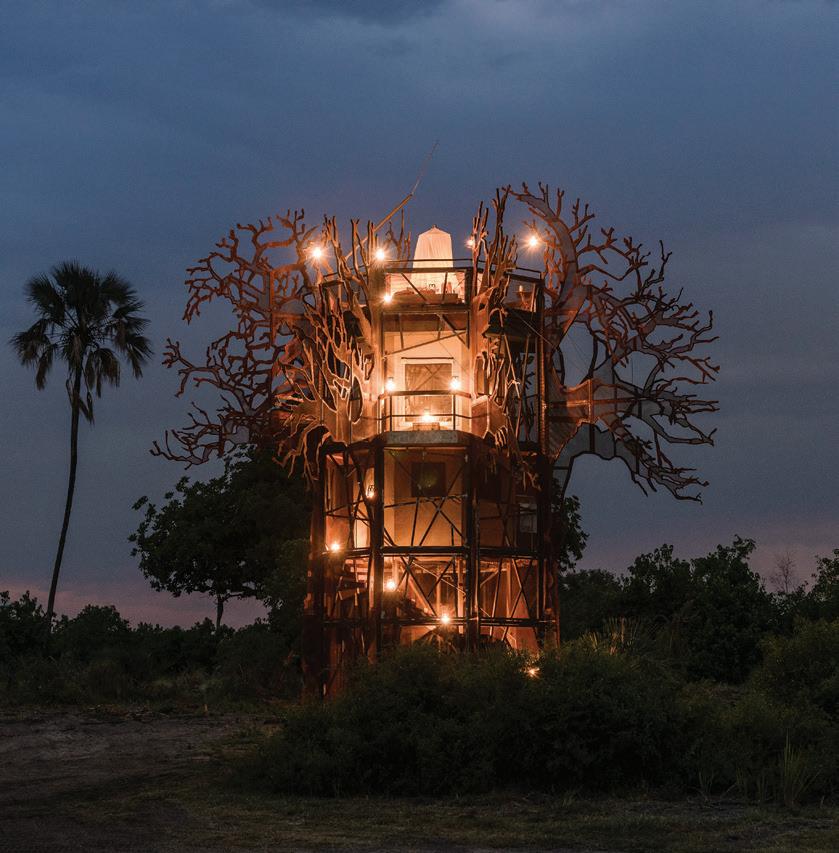
ARE THERE NEW INNOVATIONS YOU’RE EXCITED TO EXPLORE? I’m interested in the new style of sushi that isn’t as raw, but not fully cooked either. It has a different appeal and sometimes comes in a marinade.
WHO ARE YOUR MENTORS, AND WHAT VALUABLE LESSONS HAVE THEY TAUGHT YOU? I’ve had both Japanese and non-Japanese mentors. They’ve all taught me patience, which is crucial on this journey. Japanese training is intense as it’s mental conditioning, self-discipline, and striving for perfection from the start. The first few years were the toughest, focusing on discipline and patience. One of my non-Japanese mentors taught me that “done is better than perfect”. It’s about progress through continuous effort, rather than obsessing over perfection from the beginning. ■ akido.co.za
The Baobab Treehouse at Xigera Safari Lodge in Botswana offers one of the Okavango’s most unique experiences. The steel structure – built in the shape of a baobab tree – is in the middle of a copse of cotton trees a kilometre away from the main lodge, and was inspired by famed landscape artist Pierneef’s painting of the solitary boabab. A winding staircase inside the ‘trunk’ allows guests to enjoy three levels. Carved wooden furniture by designers John Vogel, Chuma Maweni, and Adam Birch are part of the second level bedroom decor, which like the bathroom, has canvas walls that open up for an outside-in experience. An open-air deck on the third level also has the most spectacular views of the floodplains. If you’re in search of a once-in-a-lifetime opportunity, this is it. xigera.com
The Verde Vita Spa & Wellness Centre, situated in the renowned eco-conscious Hotel Verde at Cape Town International Airport (which offers a carbon-neutral stay), has evolved from a modest spa to an offer-it-all wellness sanctuary. What sets it apart is the integration of green practices into all its operations. Like the hotel, it uses energyefficient systems, minimises water waste and relies on ecofriendly materials in its design. It also offers organic skincare products, organic facials, environmentally hydro treatments and a focus on natural healing practices – all crafted for minimal impact on the environment. hotelverde.com
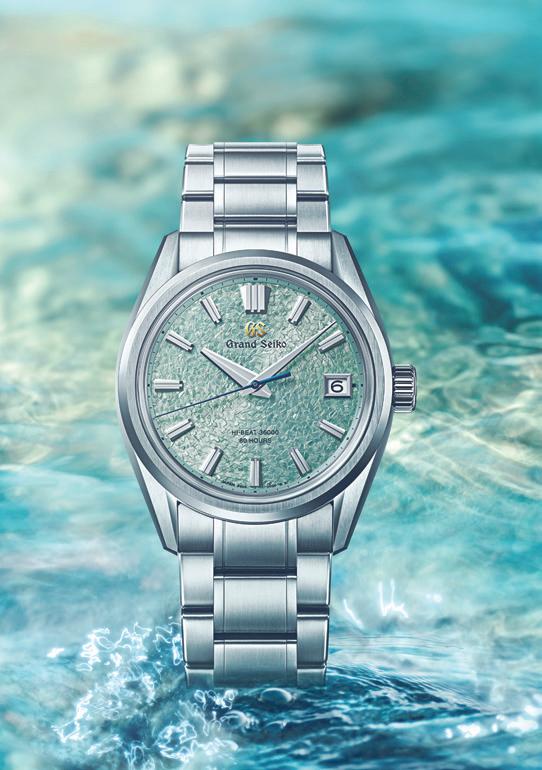

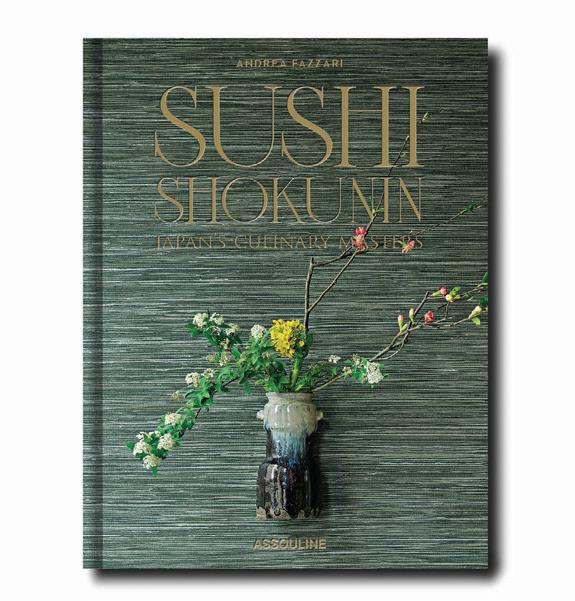
INSPIRED BY JAPANESE TRADITION, CRAFTSMANSHIP, AND AESTHETICS, THESE LUXURY SPOILS MAKE GIFTING A TRUE PLEASURE COMPILED BY INGRID WOOD
FROM TOP 1. The limited-edition Grand Seiko Evolution 9 Collection depicts the enigmatic scenery of Japan’s sacred monument Genbi Valley on its dial, and changes depending on the angle of the light. This model is the first in the Evolution 9 collection to feature the Ever-Brilliant Steel casing. POA, grandseikoboutique.co.za 2. From fashion and architecture to cuisine and travel, Tokyo Chic is a celebration of Tokyo and a beautiful tribute to the Japanese capital by photographer, author, and Tokyo resident, Andrea Fazzari. R2 250, darocha.co.za 3. Sushi Shokunin: Japan’s Culinary Master by photographer James Beard and Andrea Fazzari, profiles 20 highly skilled and celebrated sushi artisans – or shokunin – with fascinating insight into the aesthetics and their philosophy. R2 380, darocha.co.za 4. Historically reserved for the Imperial Family, Sensai’s precious Koishimaru silk cream promotes the production of hyaluronic acid, fundamental for skin health. A unique application ritual known as Saho – inspired by the code of etiquette for the Japanese tea ceremony – should be practised the same way every day. Sensai Ultimate The Cream, R16 300, edgars.co.za 5. Founded by Japanese fashion rebel Rei Kawakubo, Comme des Garcon’s scent collection is a range of unisex fragrances as unconventional and surprising as Rei’s fashion designs. The Amazingreen EDP is a blast of energy, infusing palm tree leaves, green pepper, hazelnut, and ivy leaves, with a smoky, musky base. R2 295. skins.co.za
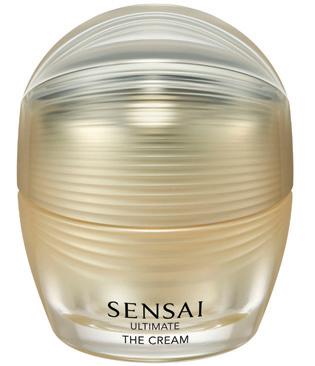
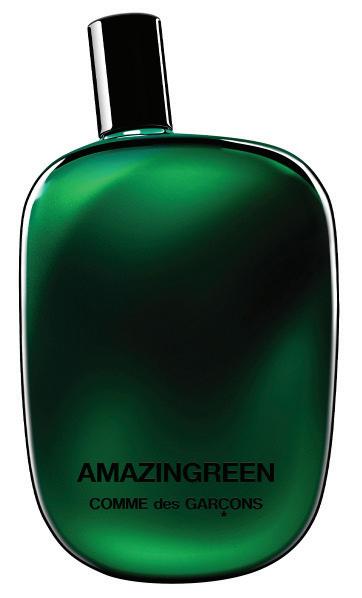


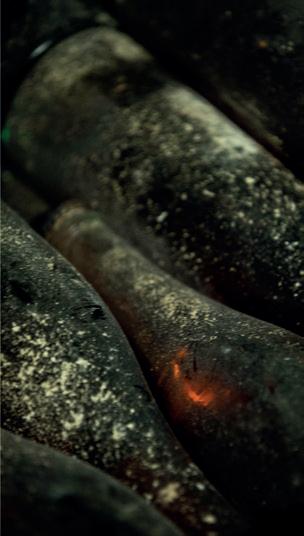

MAISON TELMONT’S VISION TO BECOME THE FIRST CLIMATE-POSITIVE CHAMPAGNE HOUSE BY 2030 – AND NET POSITIVE BY 2050 – IS DEEPLY ROOTED IN FAMILIAL HISTORY AND RESPECT FOR THE TERROIR
In the wake of the Champagne riots of 1912, local winemaker, Henri L’hôpital, founded Telmont Champagne House in Damery, near Épernay in France.
Today, Bertrand L’hôpital is a fourth-generation cellar master and the head of viticulture at Telmont. Along with winegrowing partners and passionate investors, one of whom includes actor and environmentalist Leonardo DiCaprio, the house is a symbol of leadership and hope in the conversion to organic viticulture.
In 2017, Telmont earned AB organic certification for certain sections of its vineyards, but the goal now is to convert 100 percent of its estate’s cultivation to organic agriculture by 2025 and to then become entirely organic by 2031. This holistic approach to minimise the brand’s environmental footprint is supported Telmont’s publication of Our Guide to Sustainability in Champagne, a step-by-step trajectory the business is following to reach climate-positive status. “The guide is an affirmation of our ambition, and the logical next step along the pathway we have travelled,” says Ludovic du Plessis, President of Maison Telmont.
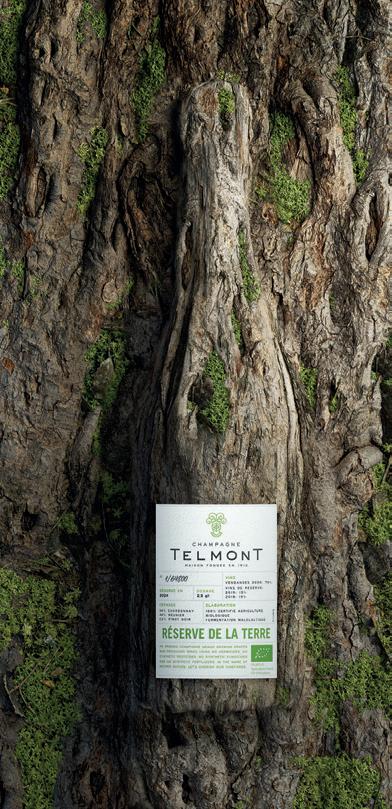
In 2021, Maison Telmont launched In the Name of Mother Nature, a project focusing on organic agriculture and the preservation of the land’s biodiversity. The house has since implemented sustainable initiatives that include elimination of unnecessary packaging such as gift boxes; reducing bottle weight (35 grams less than a standard champagne bottle); discontinuing transparent bottles for recyclable green ones; banning air freight; and only using renewable energy sources.
Earlier this year, Maison Telmont introduced Reserve de la Terre, a non-vintage cuvée, which Ludovic says is “proof of example” of what’s possible in a region where certified organic viticulture only accounts for five percent of the planted area.
Looking ahead, Maison Telmont aims to plant nearly 5000 hornbeam trees on the estate by 2030 to capture and sustainably sequester greenhouse gases caused by winemaking activity.
“We strongly believe in all these changes because for us, the wine will be good if the earth is healthy, and we want to share our experience with all those who are ready to embrace the same approach. It’s for the benefit of all,” concludes Ludovic. champagne-telmont.com
WORDS RICHARD HOLMES
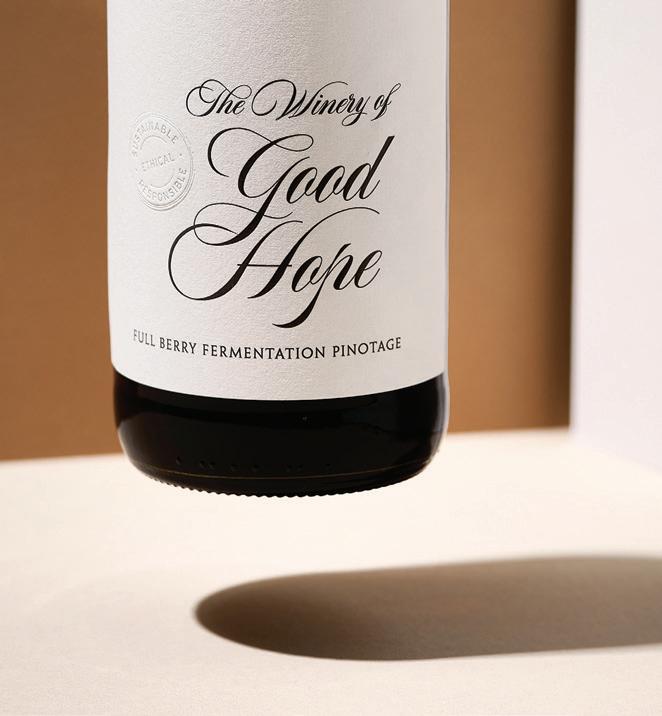
What drives your choice of wine? Price? Style? Cultivar? Perhaps it should also be sustainability, which has evolved from a buzzword in the wine industry to shaping the future of viticulture.
In the world of luxury, perception counts. And pouring from a hefty wine bottle sends a subtle signal that this is a wine to be reckoned with. Which is, of course, ridiculous. Glass bottles are simply a largely airtight container – except for the cork – and with wine increasingly shipped worldwide, the carbon impact of gratuitously overweight wine bottles is enormous.
To encourage the wine industry to up its game and reduce bottle weights, leading retailers across Europe and the United States signed the Sustainable Wine Roundtable (SWR) Bottle Weight Accord in 2023, reducing the average weight of an empty 750ml wine bottle from 550g to below 420g by the end of 2026. The SWR reckons that this 25 percent drop will save more than 23 million kilograms of carbon per year. The wineries are doing their part for South Africa.

Vineyards are inescapably a monoculture, turning diverse hillsides into a carpet of –admittedly attractive – trellised vines. But a growing number of wineries balance their intensive viticulture with concerted investment to preserve indigenous vegetation, creating natural corridors for predators and pollinators, removing invasive trees, and fostering healthy soils through the use of cover crops. Driving this behaviour is the World Wide Fund for Nature’s Conservation Champions programme, which has seen 60 producers across the Cape Winelands commit to combining sustainable viticulture with care for the environment.
TRY: The walking trails on Bouchard Finlayson Estate in the Hemel-en-Aarde Valley, which has more land under conservation than cultivation.

Radford Dale is leading the charge, with its Winery of Good Hope range now available in bottles that clock in at a featherweight 410g. Along with using less glass, all labels, stickers, and cardboard boxes are fully recyclable.
Biodynamic Stellenbosch estate Reyneke Wines is also making a bold move, slashing its bottle weight by 20 percent from the 2025 vintage, made with 40 percent recycled glass. Now we consumers need to play our part by not falling for the allure of the hefty bottle.
BUY: The Winery of Good Hope Bush Vine chenin blanc, which includes grapes from a lowyielding 50-year-old vineyard.
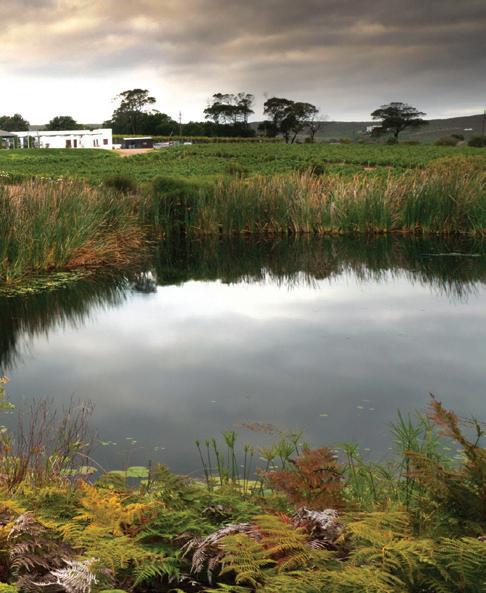
Economic empowerment and the redistribution of entrenched wealth is another hot topic in the Winelands, but a handful of forwardthinking wineries are taking bold steps to ensure workers share in the – literal – fruits of their labours. By leveraging the farming, cellar, and marketing smarts of the larger estate, empowerment projects have a much better trajectory for success. Kleine Zalze in Stellenbosch has Visio Vintners, Diemersfontein’s Thokozani combines wine with property investment, while the Bosman Adama agribusiness blends an ownership model with deep-rooted social improvement programmes.


SPEND ON: Wineries that actively work towards economic empowerment. Try the Bosman Adama white blend of chenin blanc and grenache blanc.
“The World Wide Fund for Nature’s Conservation Champions programme has seen 60 producers across the Cape Winelands commit to combining sustainable viticulture”

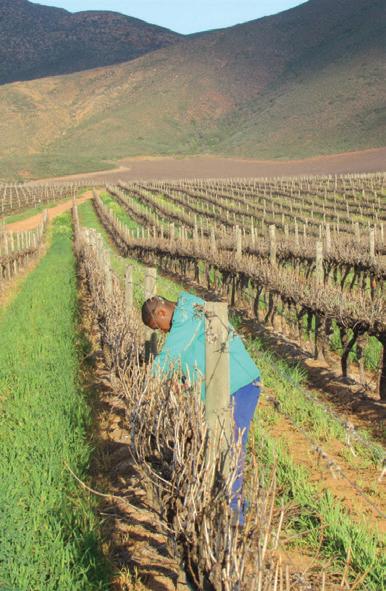
Labour relations have long been a contentious issue in the Cape Winelands, but organisations like the Wine and Agricultural Ethical Trading Association (WIETA) advocate for an improved standard of living for farm workers across the industry. Providing toolkits for employers and advocacy for workers on topics as diverse as housing, child labour, working hours, and safety, WIETA members sign up for a code of conduct for social accountability.
LOOK FOR: Wines from WIETA members who adhere to fair labour practices across the supply chain. The Bateleur chardonnay from A-rated De Wetshof is superb.


For years, organic wine producers sat on the fringes of the global wine industry, but the past decade has seen a groundswell of consumer support for organic – and biodynamic – wines that take planetfriendly farming seriously. Global sales of organic wines grew 145 percent in the decade to 2022, and although it remains a niche in the local industry, a bellwether of the trend is the formation this year of Organic Wines South Africa. The new organisation brings together 11 certified organic producers –the likes of Avondale, Starke-Condé, Org de Rac and more – to elevate the calibre and reputation of organic wines from South Africa and support other producers in the journey of organic conversion.
SIP: The multi-faceted Cyclus white blend from Avondale Wines. Their motto is Terra Est Vita, meaning ‘Soil is Life’. ■
With his impressive international portfolio and being named 2023’s Eat Out Chef of the Year, Ryan Cole of Salsify at The Roundhouse in Camps Bay needs no introduction. His new restaurant venture, COY, is located right on the water’s edge and offers diners exciting African cuisine. A strong sustainable focus means all produce is seasonal and locally sourced, and you may well find Ryan – a keen fisherman – has provided the day’s catch himself.
Having delved into Africa’s rich culinary history and the cooking techniques that come with it, Ryan is particularly excited about these nuances and methods, many of which have been lost over time.
Savour the seven-course tasting menu, which includes sublime dishes such as fresh tuna tartare served with caramelised coconut and sugarcane, or lamb rump served with a twist on a potjie sauce, spinach, butternut, and a skopo jus. We love their groovy twist on the Mozambican R&R (rum and raspberry). coyrestaurant.com

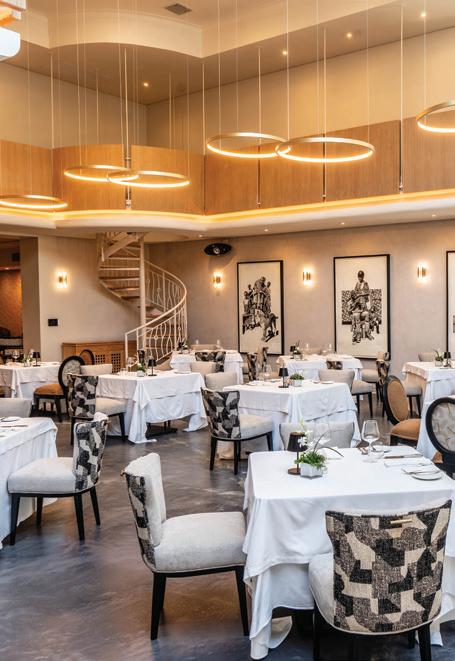
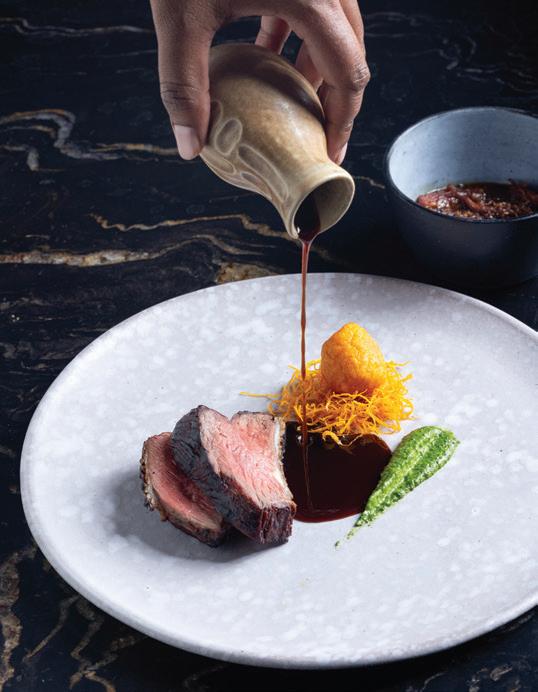
THESE SOUTH AFRICAN FINE-DINING RESTAURANTS COMBINE DEPTH OF FLAVOUR WITH THEIR STRONG APPROACH TO SUSTAINABILITY WORDS LEIGH HERRINGER
Qunu is a small Eastern Cape village where Nelson Mandela spent much of his childhood, and like Madiba’s roots, the philosophy at Qunu restaurant is deeply connected to the terroir. Head chef Scott Dressel’s menus are built on a strong sustainable foundation and every offering at the hotel’s signature restaurant has a story that connects farm to fork.
The two, three and four-course menus infuse terroir-driven African flavours with Mediterranean cuisine such as Wagyu sirloin carpaccio with whipped Gorgonzola and a mandarin dressing. The Wagyu fillet with black truffle, chestnut mushrooms, mustard and cognac, can be prepared at your table.
Passionate about his craft, Scott is also committed to nurturing the next generation of chefs, encouraging creativity and allowing young chefs to express themselves freely in the kitchen. saxon.co.za
Multi-course fine dining built around sustainability is how chef Johannes Richter tells his culinary story at The Living Room. It’s a gastronomic – now off-grid – tale of a supper club that became one of South Africa’s best sustainable restaurants (2022’s Eat Out Restaurant of the Year). Germanborn and Durban-raised, Johannes trained at Michelin-star restaurants abroad where he learnt to combine a sustainable ethos with his classical French training and love of Asian cuisine.
Exquisite dishes are presented as part of five, seven or 10-course menus, each one made with seasonal ingredients that are grown in the kitchen garden or come from small local suppliers. Johannes also uses ancient fermentation and preservation techniques to stretch produce across the seasons and reduce wastage.
The wine list, expertly curated by Johannes’ wife and sommelier Johanna, is part of a drinks offering which includes kombucha and syrups made in-house. summerhillkzn.com
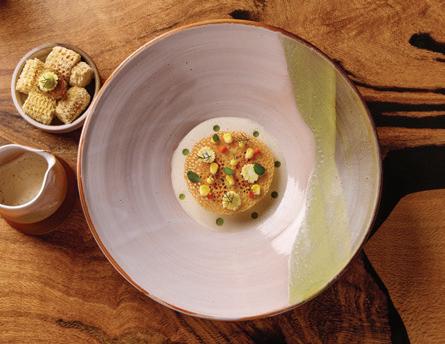

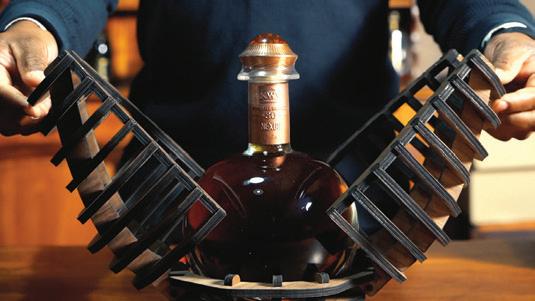
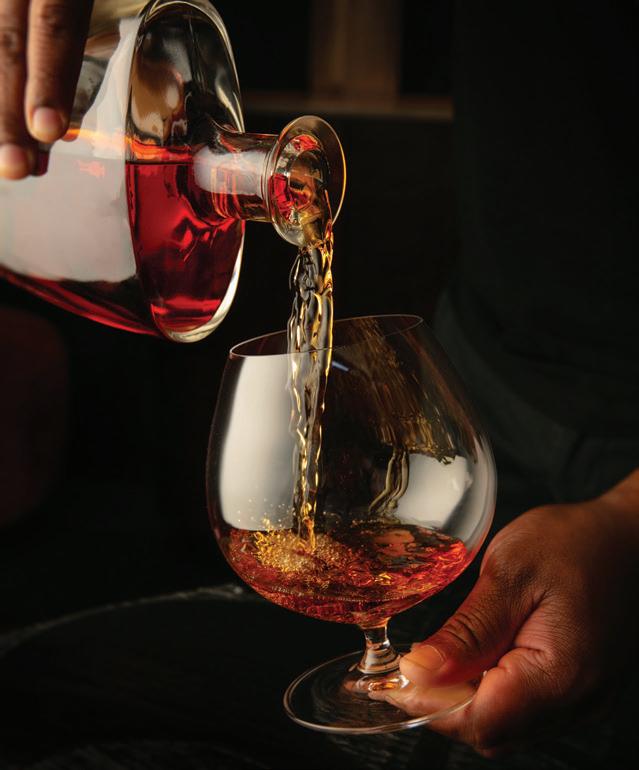
Wine and brandy have a rich history in South Africa, with brandy being distilled from the same grapes that are used in making wine. South African brandies are, by law, made almost the same way as Cognac, using a double distillation process in copper pot stills, followed by a minimum of three years’ ageing in oak casks. The golden spirit is usually made from chenin blanc grapes and has been a staple commodity in the Cape for more than two centuries, having been first produced circa 1672.
Later this month, Strauss & Co, South Africa’s leading wine and art auction house, will host the Strauss & Co Cape Fine Brandy Auction – the first of its kind in South Africa. Taking place from 6 – 18 November, the timed online sale features a definitive selection of the most rare and exceptional aged Cape Fine Brandies from the depths of South Africa’s greatest distillers.
Senior wine specialist Roland Peens says casks of Cape Fine Brandy, some two decades or older, have been bottled specifically for Strauss & Co, with each cask containing less than 300 bottles. “Fine spirits have shown huge growth in the global environment led by single cask whisky, and we see the same opportunity for Cape Fine Brandy.”
Bespoke casks from Boplaas, Kaapzicht, KWV, Joseph Barry, Sydney Back and Van Ryn’s will be auctioned in varying lot sizes to appeal to both trade and private bidders.

Higgo Jacobs, also a senior wine specialist, says that over the past five years, Strauss & Co has been instrumental in building a strong secondary market for fine wine in South Africa. “Cape Fine Brandy is globally undervalued and offers exceptional value and investment potential. A commercial collective at the top end of our brandies has never been offered in this way. This sale is a first of its kind in South Africa, and Strauss & Co is committed to doing the same for brandy. South African brandy is world class and deserves to be in the spotlight.”
In 2024, Van Ryn’s 15-Year-Old Potstill Brandy was named World’s Best Wine Brandy at the World Drinks Awards, while KWV was once again highlighted as Best in the World at the International Spirits Challenge earlier this year.
Strauss & Co has partnered with brandy expert Shane Mumba, ambassador of the South African Brandy Association, to
raise awareness around the auction. “The collaboration is an excellent opportunity for collectors to get their hands on rare, unique, and extremely limited single cask Potstill Brandies,” he says. “They are delicious and may have been blended into bigger batches, but now they are locked in bottle for generations to come.”
The following Cape brandies will be on auction: A Boplaas Single Harvest Potstill Reserve 2005, a Kaapzicht 25-year-old Potstill, KWV Limited-Edition Single Varietal Pinotage Potstill, the Joseph Barry XXO Single Cask, Sydney Back’s 17- and 22-yearold Potstill, and Van Ryn’s bespoke 14-year-old PX Cask Finish. Rare vintage brandies from Tokara and Groot Constantia, among others, will also be on auction, including the iconic KWV Centenary Limited Edition and Van Ryn’s Au Ra. ■

Estimate: R1 500 000 – R2 000 000
The Strauss & Co Modern & Contemporary November Flagship Auction takes place on 12 November at 7pm, where this painting, and many others, will be available.
Public Viewing from 28 October at 89 Central Street, Houghton, JHB. straussart.co.za

COMMITTED TO REWILDING AND THE REINTRODUCTION OF INDIGENOUS PLANT SPECIES, LALIBELA GAME
RESERVE IS AN UNTAPPED GEM IN THE EASTERN CAPE
WORDS DEBBIE HATHWAY
n the hour-long drive from Chief Dawid Stuurman International Airport in Gqeberha to the Lalibela Game Reserve turno , returning to the Eastern Cape on assignment for a journalist who has roots in the Transkei feels like coming home. I was to spend time shadowing wildlife photographer and Panerai friend of the brand, Marlon du Toit, exploring an unfamiliar environment for him. I hoped the destination would work its magic on my colleagues. Three game drives later, "the wildlife didn't disappoint", was Marlon's parting shot. The highlight? A spine-tingling growl that split the air as a grumpy lioness glared at us – just metres from our game-viewing vehicle – crouched low and ready to pounce.
Lalibela Game Reserve (named after a type of honey from Ethiopia) may not be as widely recognised for eco-tourism as some of the more iconic parks in South Africa, but it's a hidden treasure for those in the know. I was also happy to learn that it is no longer a hunting concession. As CEO of Lalibela Game Reserve for the past seven years, Johann Lombard explains that many visitors, including seasoned safari-goers, arrive with scepticism, often comparing Lalibela to the more famous Kruger National Park. However, once they've experienced it, the feedback is glowing. “A friend who leads photographic safaris all over Africa said ours was the best he’s ever been on,” Johann shares. “Here, there is a choice, volume. Unlike places where you're lucky to glimpse a leopard behind a bush, you can see the full animal at Lalibela and capture its adaptation to nature even in our infamous 100km winds. That's rare.”


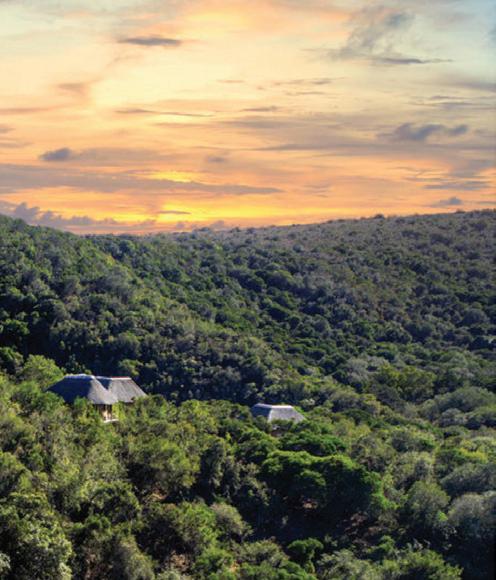

“We’ve cleared 80 percent of the invasive wattle trees and we’re restoring old farmlands”
Essential to the reserve’s appeal is the world-class guiding team. "We're not just looking for qualified guides," Johann continues, "We want people who can engage on an intellectual level because our guests will fact-check you. Guides here need to be more than just drivers; they need life skills, knowledge, and the ability to interpret what they see." The guides also play a crucial role in storytelling, o ering personal insights into the Albany biome and local Bushman paintings.
While the reserve doesn't have the sheer expansiveness of the Kruger or Sabi Sands, it has a unique allure. "We don't have the massive landscapes yet, we're still rewilding and growing. But that's part of the charm," says Johann. "We've cleared 80 percent of the invasive wattle trees and we're restoring old farmlands. It’s a process that can take anywhere from five to 300 years. Already there are places on the reserve where, if you block out the sound of the occasional truck, you'd think you were in the Serengeti."
Rewilding e orts include the reintroduction of species like Cape vultures in collaboration with Vulpro, and the possibility of bringing in others like Egyptian and lappet-faced vultures. As I listened, I couldn't help but marvel at the transformation already in progress. The slow return of indigenous plants and the soaring flight of the Knysna turaco made it clear – Lalibela isn't just another reserve, it is a place of revival. "It's beautiful here, and the birdlife is exquisite," Johann adds, emphasising that while the reserve may be just down the road from Gqeberha, it feels like a world away.


Lalibela is not only visually stunning but also rich in history, culture, and conservation. Staying here is about being immersed in nature, learning from passionate individuals, and enjoying quiet moments of awe. The management team aims to create exclusive experiences for guests, allowing them to spend extended periods with animals without rushing o . There is a two-vehicle limit per sighting, and the walking safaris add to the thrill of authentic game viewing.
Plans for the future include equipping safari vehicles for photographers, drawing inspiration from Tanzania and Kenya where vehicles are outfitted with charging stations and other equipment to enhance the guest experience.
The lodges are beautifully appointed, catering to di erent needs and tastes, from Tree Tops Safari Lodge – a tented camp with double-insulated canvas to combat the cold – to Inzolo which is tucked away in a valley for a more secluded, intimate experience.
Visitors leave with more than photos; they take home a profound connection to nature and a greater understanding of the reserve's conservation goals. Guests can also contribute to conservation work and local community upliftment. Lalibela continues with its tireless e ort of the anti-poaching teams and K9 dog units, ever alert to ensure the reserve's and the wildlife's safety.
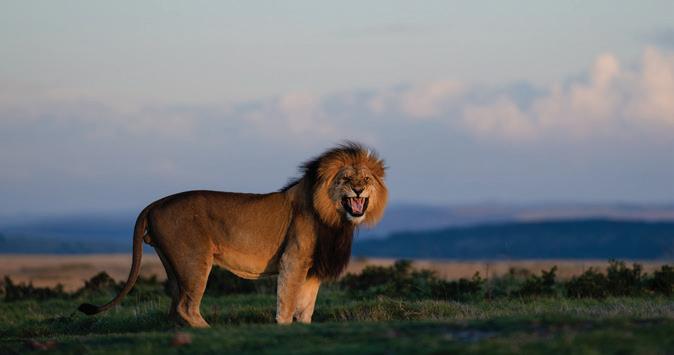
Unsurprisingly, my travelling companions loved every minute of the jam-packed visit. As we reluctantly said our goodbyes, we knew we were leaving with a renewed connection to nature and a deep respect for the investment into protecting this hidden gem of the Eastern Cape. ■ lalibela.net
CONSTRUCTED USING LOCAL MATERIALS AND COST-EFFICIENT CONCRETE, THIS ECO-FRIENDLY FAMILY HOME ON THE CAPE’S WEST COAST – DESIGNED BY THE AWARD-WINNING SOUTH AFRICAN-BASED BOSS ARCHITECTS – IS THE EPITOME OF SUSTAINABLE ELEGANCE WORDS
DEBBIE HATHWAY

Located on South Africa’s glorious West Coast, Langebaan ticks all the boxes for nature lovers and adventure seekers. The expansive views over what the locals call ‘Neptune’s playground’ is one of the key attractions of this standout home along Sunbird Drive, which was designed by South Africanbased architecture firm, BOSS Architects.
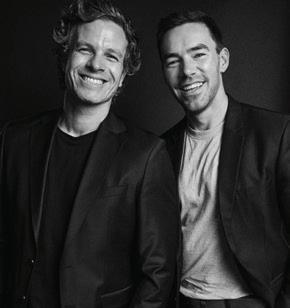
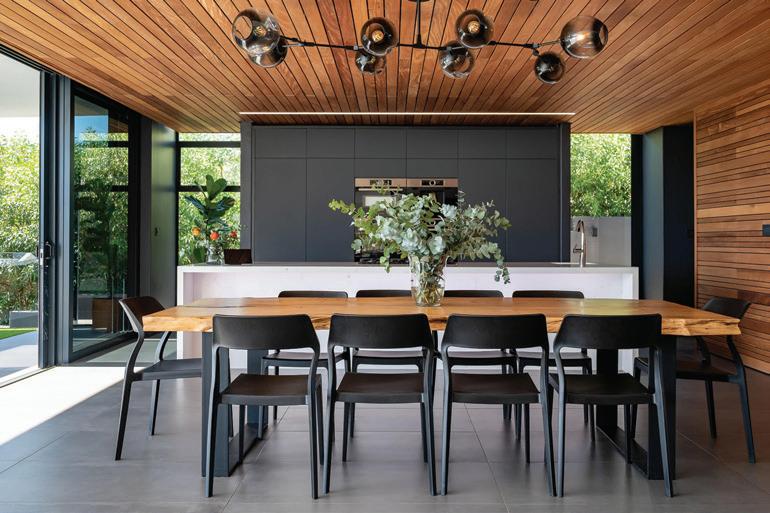
The brief from homeowner Niel van Schalkwyk to his childhood friend, master architect Johan Basson, was to use sustainable design as the building blocks of this property. “Creating an environmentally responsible off-grid entertainer’s dream that pays homage to the region’s unique landscape – coastal ecosystems and vibrant wildflower reserves – was a family affair,” says structural engineer Niel. Marking the second of three projects they’ve collaborated on, Niel and Johan grew up in Langebaan, making this a homecoming project in every sense.
Niel’s father, Deon, managed the construction and the R16-million budget, capitalising on cost savings through their in-house expertise and access to materials via their family business, West Coast Decking, which supplied all the reinforcing and rib-and-block slabs. “The site’s breathtaking views called for a design that exudes tranquillity and openness, forming a seamless connection between inside and out,” explains Johan. “We focused on unobstructed sightlines, optimising natural light and crossventilation, along with solar panel orientation and rainwater collection systems. All this contributes to the home’s sustainability.”


A cost-efficient concrete structure was created to complement the brick, aluminium, and wood finishes, maximising the incredible views with the use of local materials. These features were all designed to reflect a luxurious barefoot ambience. The timber-clad entrance extends to the kitchen, leading to the entertainment cabana by the pool. As the heart of the home, this indoor-outdoor living area along the pool edge reflects the client’s passion for entertaining. White floor plates and robust timber elements strategically guide the focus to the views, while large overhangs provide ample sun protection. The poolside cabana enhances the lagoon vistas and shields the space from the summer winds.
“We focused on unobstructed sightlines, optimising natural light and cross-ventilation, along with solar panel orientation and rainwater collection systems”
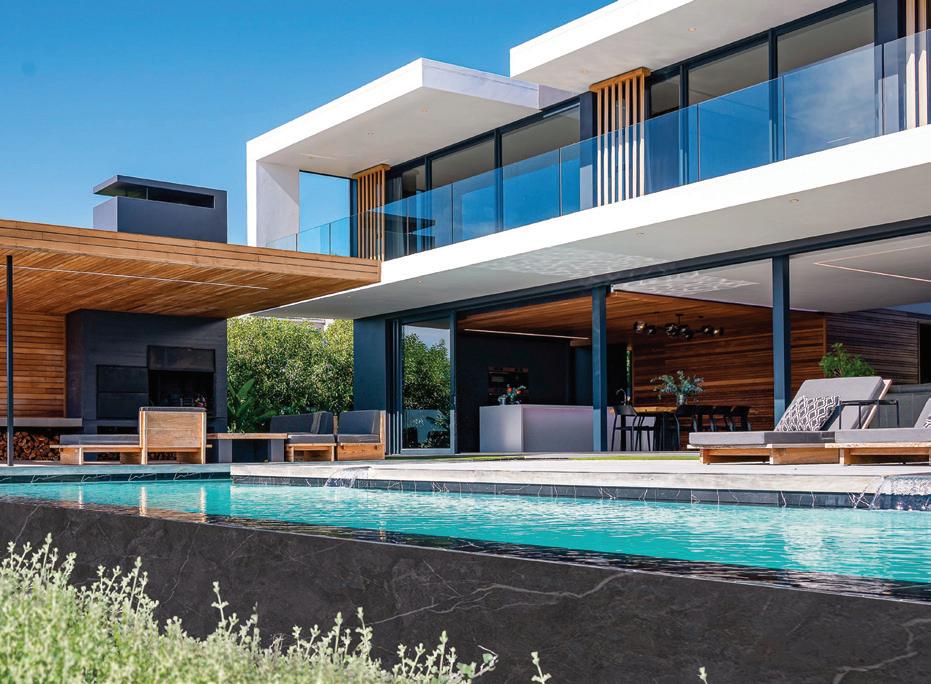

“For the interiors, we combined opulence with natural materials – timbers, weathered bronze, marble, stone, and reflective surfaces – blending them harmoniously with the surrounding landscape,” says Johan. This interplay between darker architectural tones and warmer interior finishes creates an inviting haven of comfort and serenity. The home also features a hidden 300 square metre underground “man cave,” complete with a home cinema, gym, games room, and a spacious lounge-bar area that transforms into an entertainment hub after sunset. “Entertainment was a big focus for the family,” adds Johan. “Niel, being an engineer, pushed the boundaries, especially with the floating cabana – it has no columns – it’s entirely suspended. This adds a personal touch to the design.”
Sustainability was vital, with rib-andblock slabs providing cost-effective, easy-to-install floors and roofs. This approach allows for longer spans without extensive formwork but requires careful consideration for cantilevered elements. The home runs on a 12kW solar system, and several rainwater tanks in the basement supply water for the pool and garden.
The details make all the difference, and Sunbird Drive exemplifies BOSS Architects’ passion for innovative, sustainable designs that harmonise with their surroundings.
BOSS Architects founding partners Johan and Ludwig Chambers delight in providing intuitive design solutions that optimise views, natural light, and cost-effective applications. They were a perfect fit for this project. “Niel and I have a great working relationship,” says Johan. “We always find a way to balance bold design ideas with his dad’s more conservative budget. Today, the family is loving living together at Sunbird Drive.” ■ bossarchitects.com
HOW DID YOUR JOURNEY INTO FOOD START? Growing up in a food-business family, I have always been in food in some way. My journey only started when I quit my job in advertising to pursue food entrepreneurship, which led me to my passion and life’s work.
WHAT INSPIRED YOUR PASSION FOR SUSTAINABLE AND PLANT-BASED FOOD?
My personal story about food allergies inspired me to explore a plant-based lifestyle. This exploration exposed me to how our broken food system is contributing to lifestyle diseases and planetary health. So, my passion was born out of the necessity to heal myself, to teach others, and to be the change I wanted to see in the world.
YOUR CAREER HIGHLIGHTS
My whole career feels like a highlight, but having a plantbased pop-up restaurant in Dubai during Cop28 was a highlight. My Mugg & Bean collaboration, which is about bringing delicious plant-based dishes to my community, and telling my healing food story through my book Veggielicious, are other highlights. I also consider opening and running my restaurant, Lotsha Kitchen and Cocktails in Rosebank, and being food editor at True Love magazine as high points.
AUTHOR OF THE PLANT-BASED COOKBOOK VEGGIELICIOUS , AWARDWINNING CHEF MOKGADI ITSWENG HAS WORKED AS A FOOD EDITOR, STYLIST, AND RESTAURANTEUR. SHE TELLS US ABOUT HER WORK WITH THE CHEFS’ MANIFESTO, A GLOBAL MOVEMENT OF CHEFS CHAMPIONING THE UNITED NATIONS’ SUSTAINABLE GOALS TO END WORLD HUNGER
COMPILED BY LERATO TSHABALALA
Thailand. The Thai are masters of flavour and always get the balance of texture and taste right. The use of fresh ingredients always elevates whatever dish you are eating.
Zanzibar. The use of spices and fresh ingredients is what makes the east African island’s food so delicious. It’s the perfect mixture of African, Arabic, and Eastern flavours, and the locals are generous with sharing their food culture and heritage.
WHAT INDIGENOUS SOUTH AFRICAN INGREDIENTS DO YOU FREQUENTLY COOK WITH? I love sorghum and I cook with it all the time. I love how versatile and climate-smart this super-grain is. I make anything from porridge, salads, cakes, and breads to smoothies with it. It’s an undervalued and forgotten grain that we as South Africans need to grow and consume more of. It’s a gut-healing grain that has deep spiritual significance to many of us South Africans.
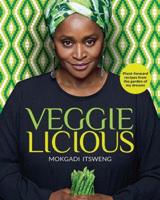
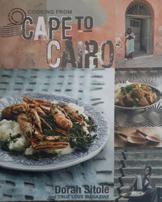
TELL US ABOUT YOUR INVOLVEMENT WITH CHEFS’ MANIFESTO… The Chefs’ Manifesto is a group of global chefs advocating for a healthy and sustainable food system. As food activists and key actors in the food system, our role is to teach and expose our communities about healthy and sustainable ways of life. I advocate for plant-based indigenous foods that are accessible and climatesmart for our health and that of the planet. I work with Chefs’ Manifesto to amplify my work and to learn more about the food system and from its networks.
YOUR THREE FAVOURITE FOOD DESTINATIONS?
Italy. I love how the Italians turn simple ingredients into feasts. The use of fresh seasonal ingredients and age-old cooking traditions is what always gets me. I love how different regions will have their own flavour based on what grows there.
FAVOURITE COOKBOOKS OF ALL TIME?
Aphrodite by Isabel Allende, Cape to Cairo by Dorah Sitole, Elsa’s Wholesome Life by Ellie Bullen, and Feasts by Sabrina Ghayour.
WHAT IS LUXURY TO YOU?
Luxury is being able to disappear to my favourite cabin in the mountains of Eswatini with little-to-no signal to recharge and connect with the source. Also, Sunday dinners with my family and owning my time.
WHO ARE YOUR FOOD HEROES?
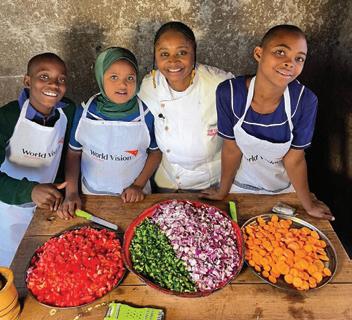

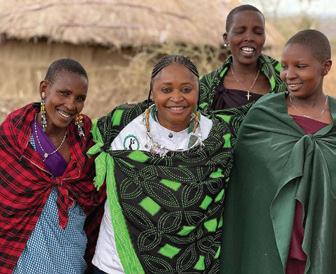
My two grannies who instilled a food presence in my life are my ultimate food heroes; one was a cook at a Durban hotel and the other a subsistence farmer. They taught me so much about food and its power to love and heal families. The late food editor, Mam’ Dorah Sitole, who exposed me to the wonderful world of food media, is my other hero. The farmers who work tirelessly to consistently bring good food to our plates consciously and responsibly, are also heroes in my eyes.
YOUR TOP SPOTS IN SA FOR: BRUNCH, LUNCH, DINNER: Brunch – Jarryds Brunch & Bistro in Cape Town, and Pablo Sandton at the Mint Hotel in Joburg.
Lunch – Leafy Greens Whole Food Cafe in Muldersdrift and Belly of the Beast in Cape Town. Dinner – Beyond Restaurant at Buitenverwachting and Salsify at The Roundhouse, both in Cape Town. WHAT’S ON YOUR CHRISTMAS WISHLIST? A trip to Morocco, a pair of green Terry de Havilland shoes, and an Anoki ring. ■
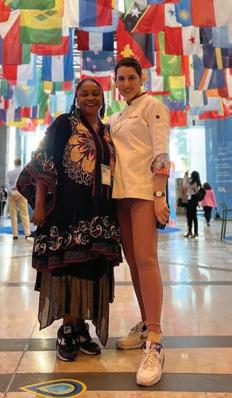
CLOCKWISE FROM TOP: In Tanzania, making meals for a school feeding programme sponsored by World Vision; with chefs Fatamata Binta, Rodrigo Pacheco, and Anahita Dhondy at the World Food Forum in 2023; with chef Anahita Dhondy at the UN’s Food and Agriculture Organization in Rome attending the World Food Forum; cooking with a Masaai community in Arusha, Tanzania




